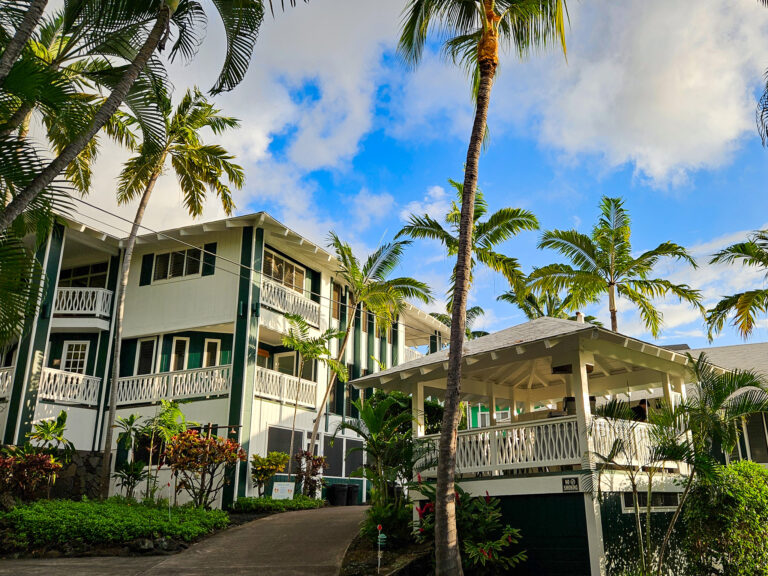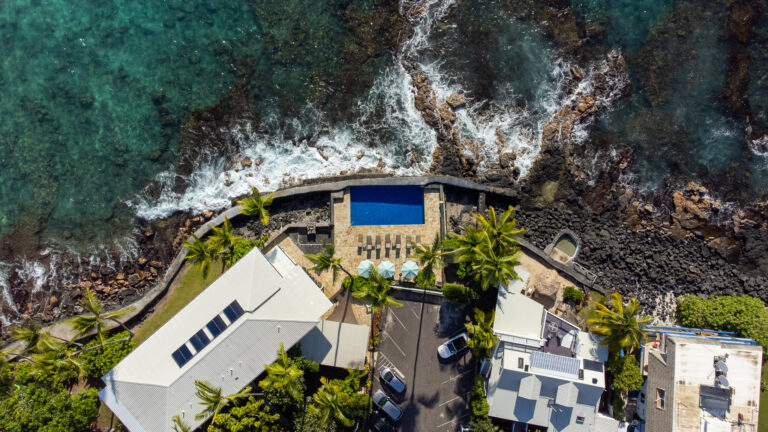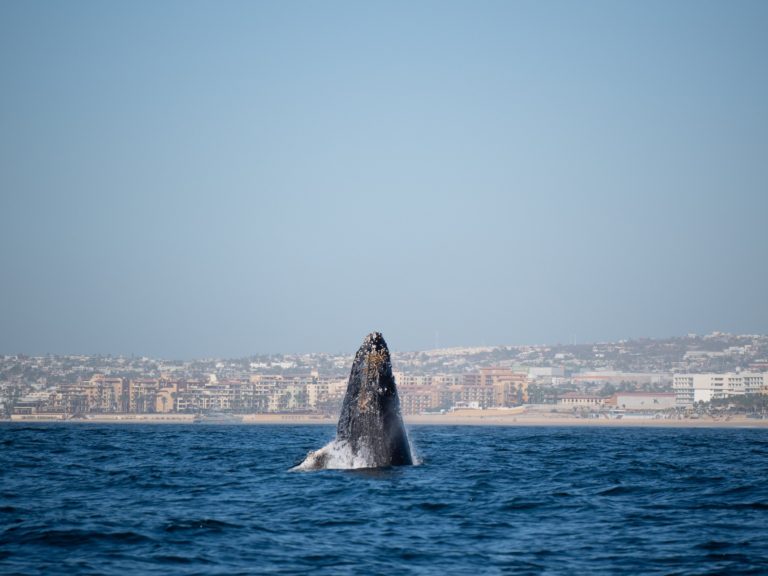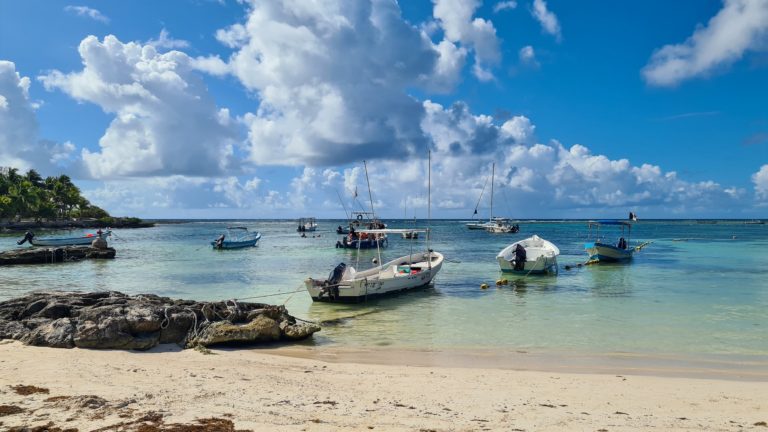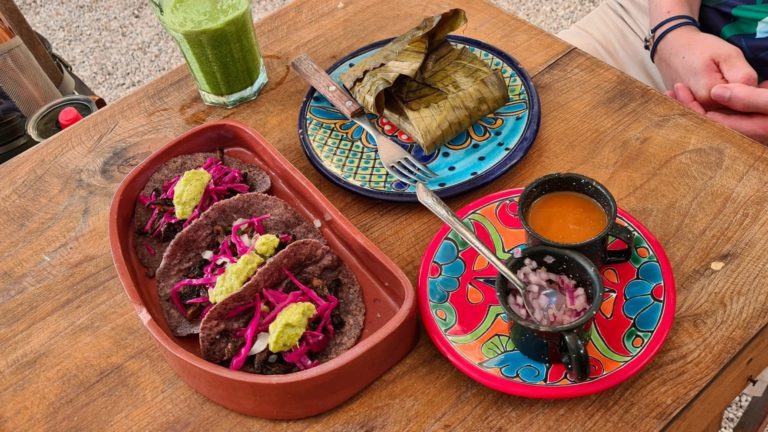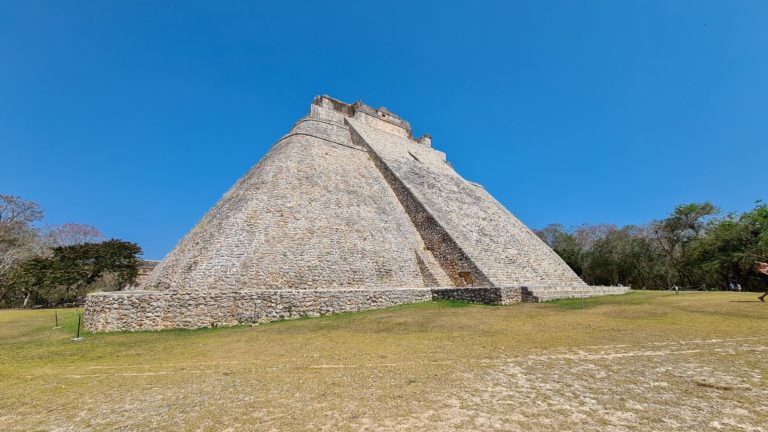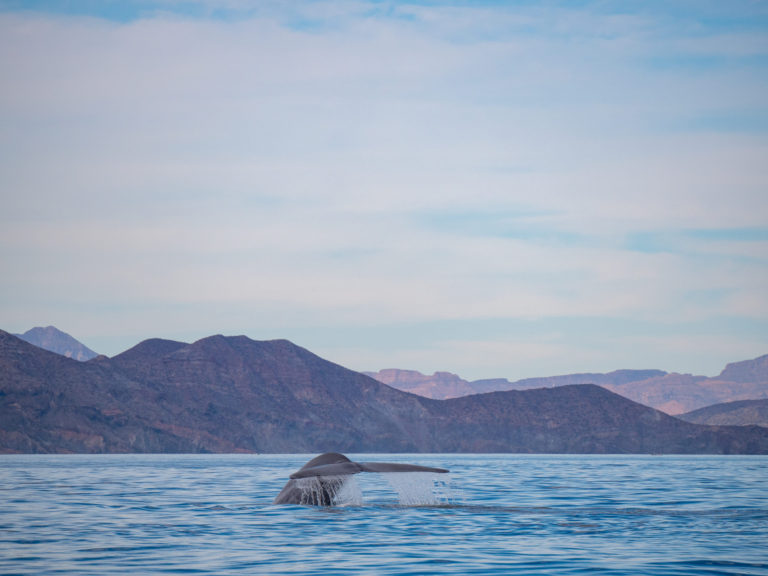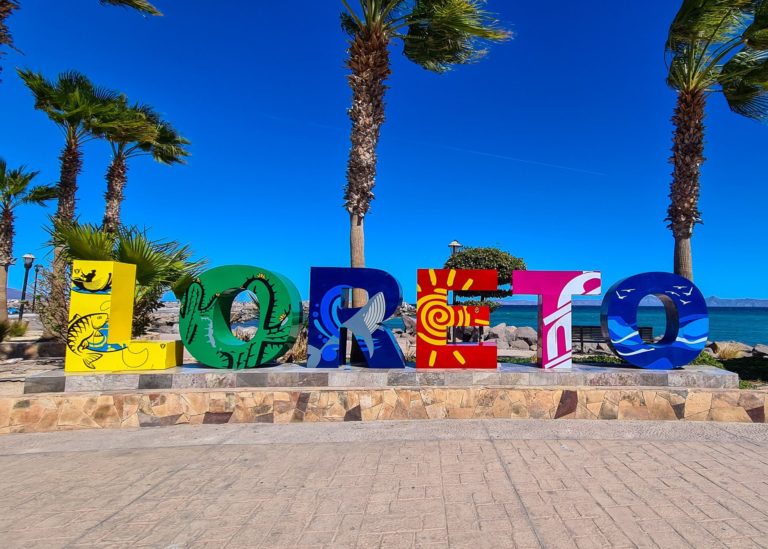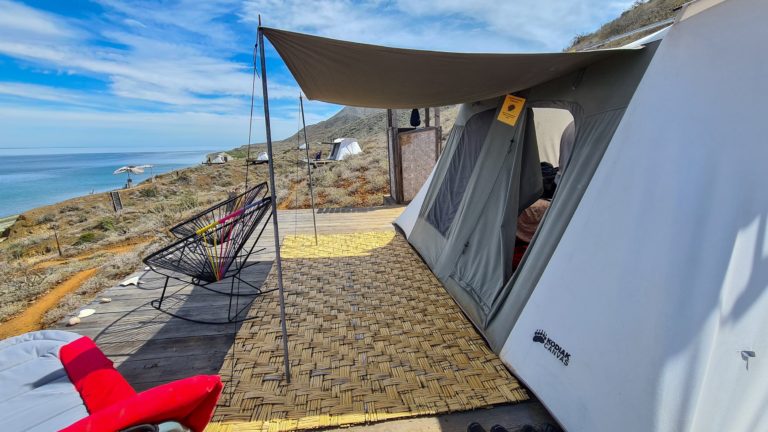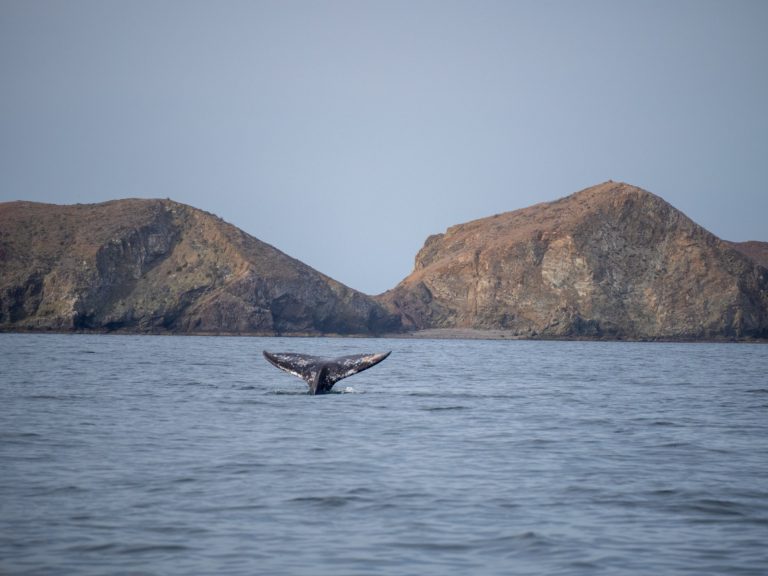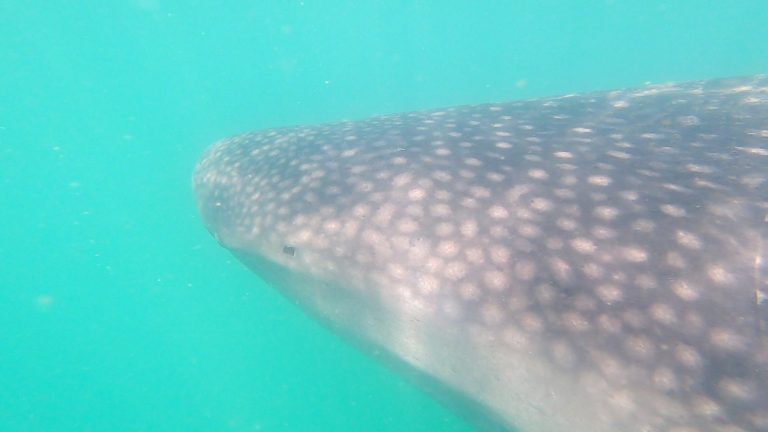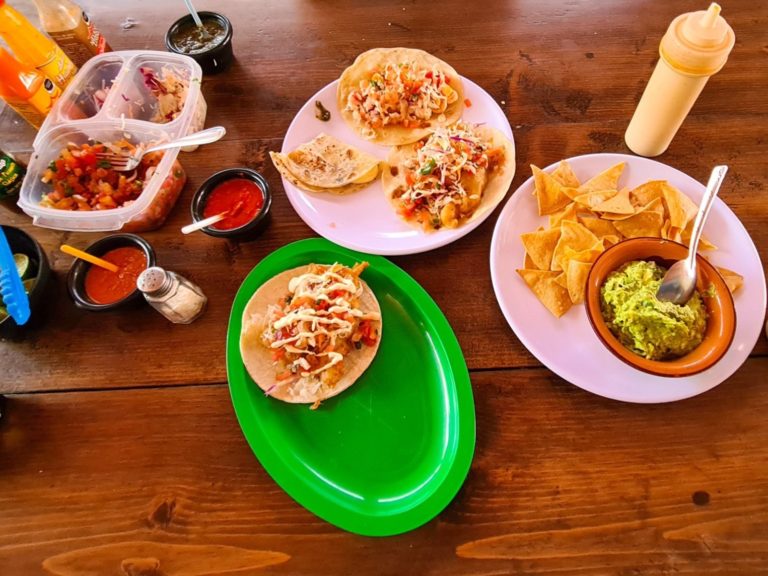The Thorough Guide to Kailua-Kona
The 22 Best Things to do in Kailua-Kona, Hawai’i, how to get here, what to eat, where to stay, interactive map and more!
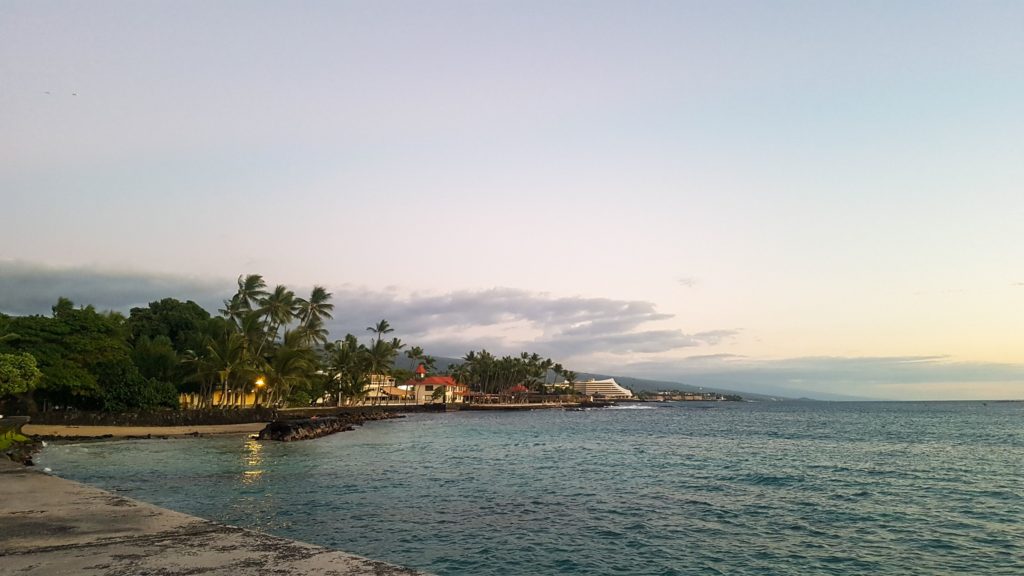
This post may contain affiliate links, which means we might earn a small commission on anything purchased through these links at no extra cost to you. Learn more on our disclaimer page.
Located on Hawai’i’s west coast, Kailua-Kona is a vibrant ocean-side town and the perfect base for your holiday. Locally referred to as Kona, this upbeat town is the antithesis of the east coast’s lush and sleepy Hilo, and boasts sprawling golden sands, perfect snorkelling and surfing conditions, award-winning bars and restaurants, great shopping opportunities and a hot, dry climate.
Time needed: 4-6 days.
When to go: September-November – off-peak means less crowds, cheaper prices and the weather is still great.
Weather: Consistently between 20°C-30°C with barely any rain and a hot, dry climate.
Language: English & Hawaiian.
Currency: American Dollar.
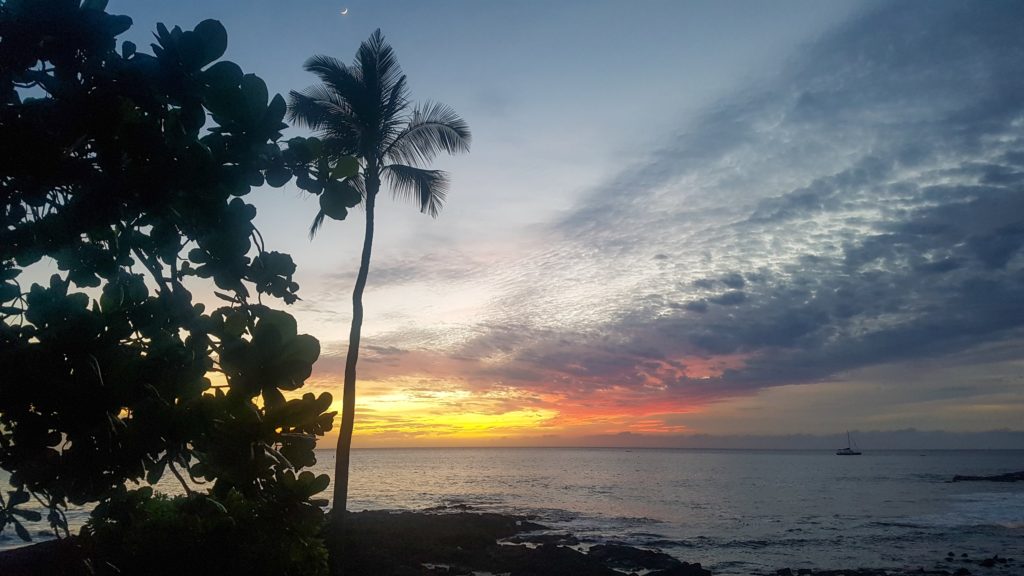
Things to do in Kailua-Kona
1) Shops, bars and restaurants
Kona has an outstanding array of shops, restaurants and bars, most of which feature ocean views and are the perfect place to enjoy a Hawaiian sunset. The town itself is home to Kona Farmers Market, which features more than 40 outdoor vendors, boasting locally grown produce, flowers, handicrafts and specialties like Kona coffee. It can be found on located on Ali’i Drive and is open between 7:00-1600 every Wednesday-Sunday.
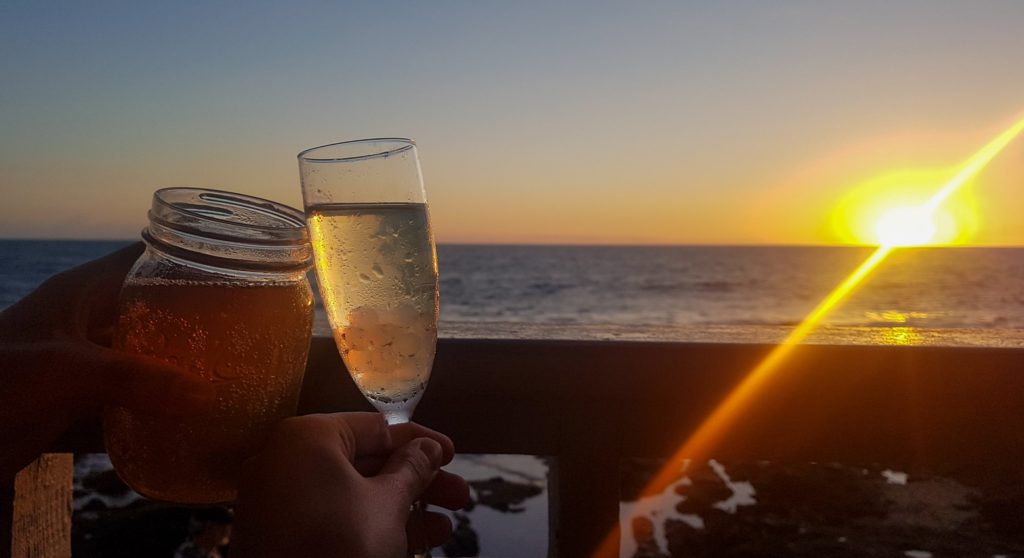
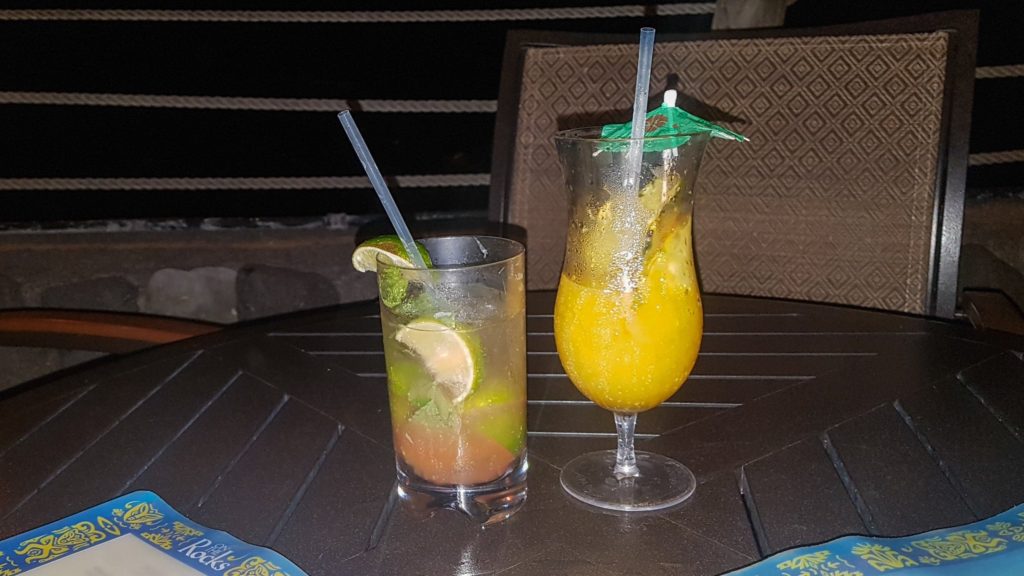
2) Explore Kona’s history
For day trips, look no further than Hulihe‘e Palace, the former vacation home of Hawaiian royalty. The Palace was originally built out of lava rock and has now been converted into a museum. Or take a trip to see Moku‘aikaua Church, the oldest Christian church in Hawai’i, which dates back to 1837.
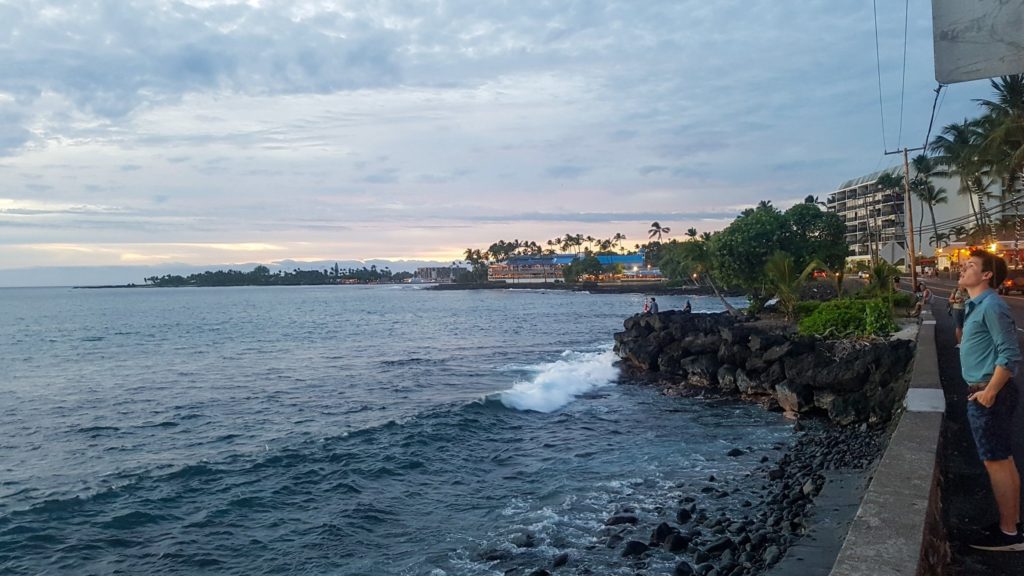
3) Pu’uhonua O Hōnaunau National Historical Park
Pu’uhonua O Hōnaunau National Historical Park was home to several generations of powerful chiefs. Puʻuhonua (Place of Refuge of Honaunau) features a complex of archaeological sites including Hale o Keawe Heiau (a temple), the royal fishponds, Kōnane Papamū (a stone for playing Hawaiian checkers), and Keoneʻele Cove (a protected cove used as a canoe landing).
Pu’uhonua preserves the site where Hawaiians who broke a kapu (one of the ancient laws) could avoid certain death by fleeing to this place of refuge. If the offender made the treacherous journey, by sea or on foot, they would be absolved by a priest and freed to return to society. Defeated warriors could also find refuge here during times of battle as no physical harm could come to those who reached the boundaries of the Puʻuhonua.
The park is open 8.15-sunset daily and costs $20 per car (or $10 per person on foot or bike), but there are a few public holidays per year when entry is free! You can get a map on entry and enjoy a self-guided walk on the 0.5 mile trail through the park. Park Rangers also provide talks throughout the day in the Amphitheatre next to the Visitor’s Centre.
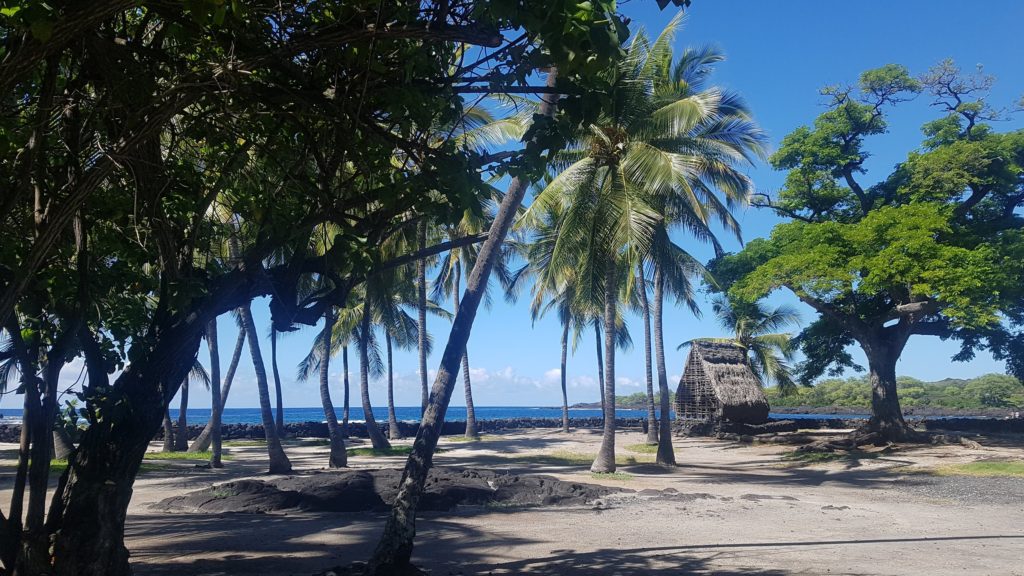
4) Kaloko-Honokōhau National Historical Park
Similarly, the Kaloko-Honokōhau National Historical Park lies to the north of Kona and contains ruins of early fish ponds, petroglyphs and the National Historic Landmarked archaeological site known as the Honokōhau Settlement.
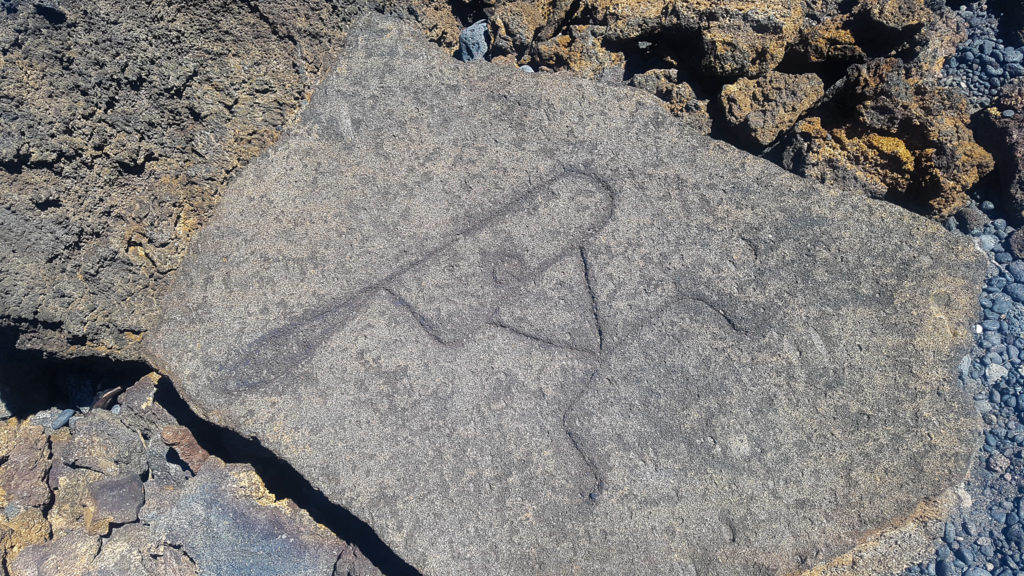
5) Snorkel at Two step
Situated right next door to Pu’uhonua O Hōnaunau is Hōnaunau Bay, also known as Two Step. To enter the water you can climb down two giant steps which have been made by cooling lava. But be careful as lava rock can be as sharp as glass! Under the water you’ll see lots of coral, tropical fish, sea urchins and maybe even a turtle!
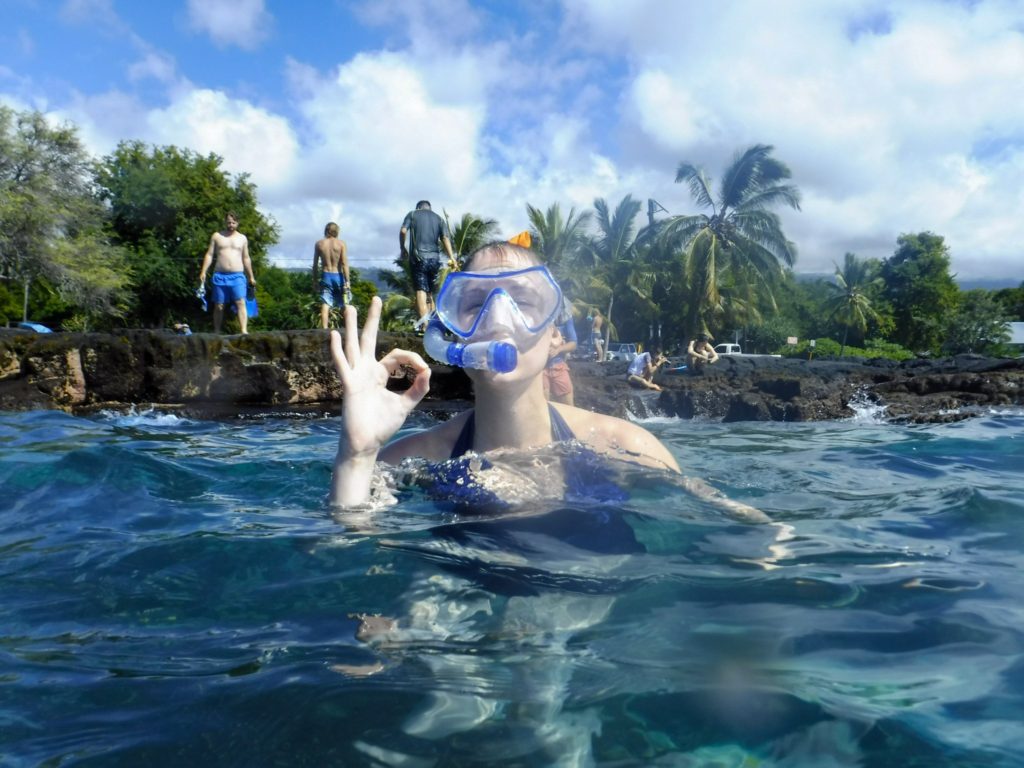
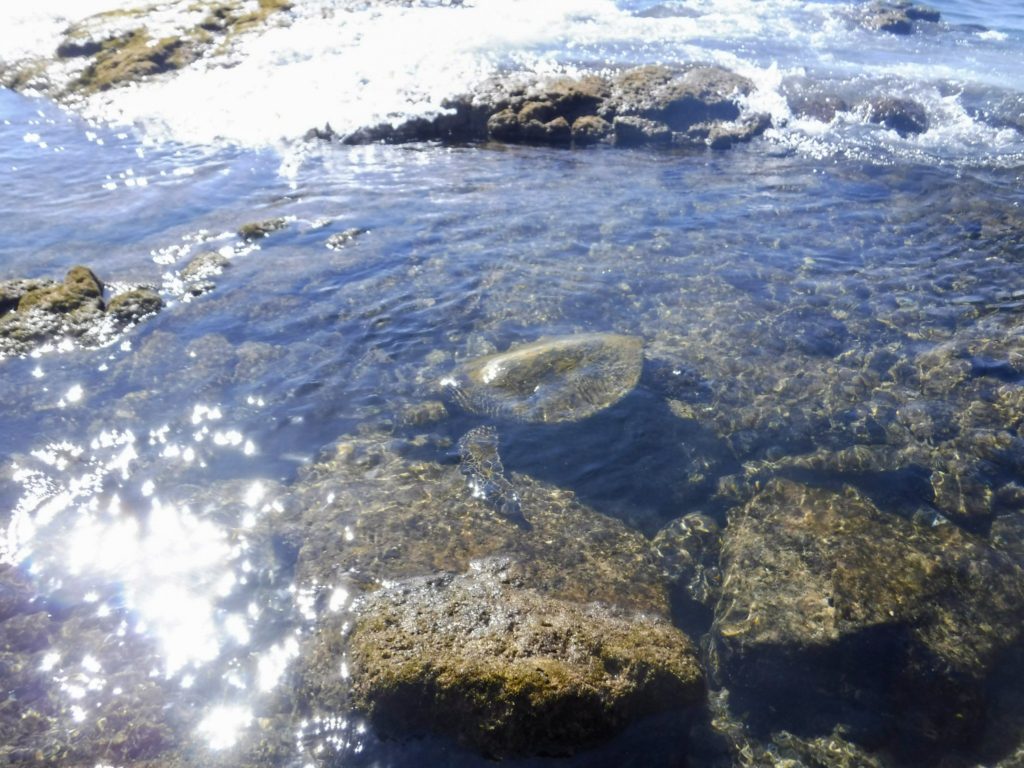
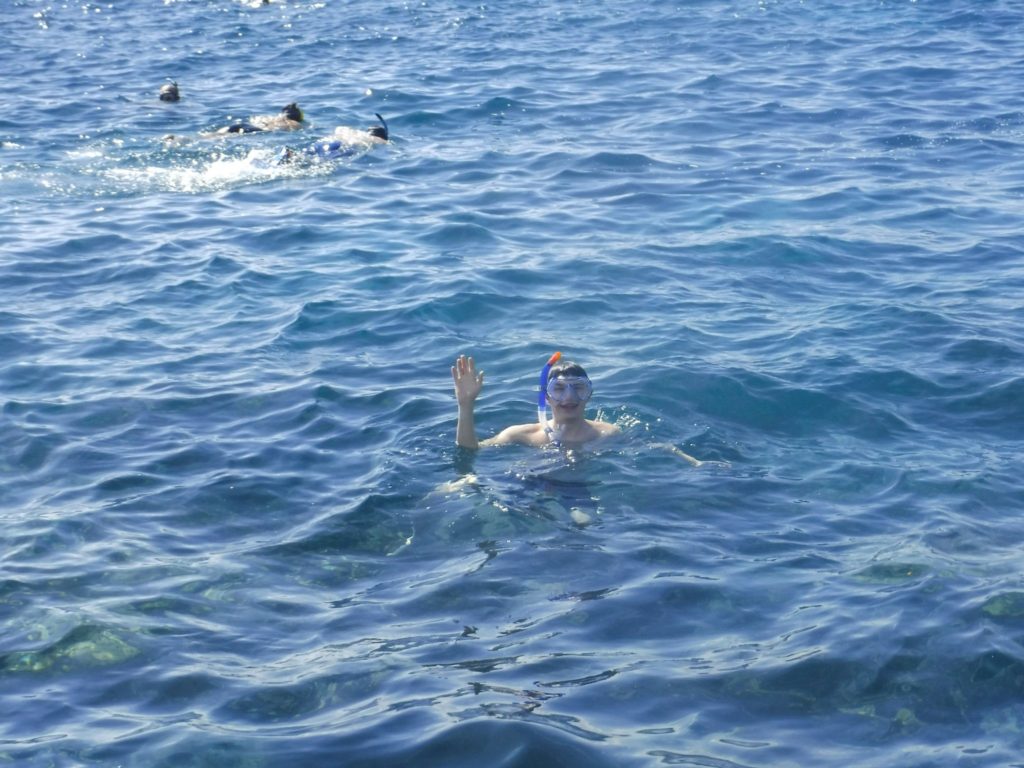
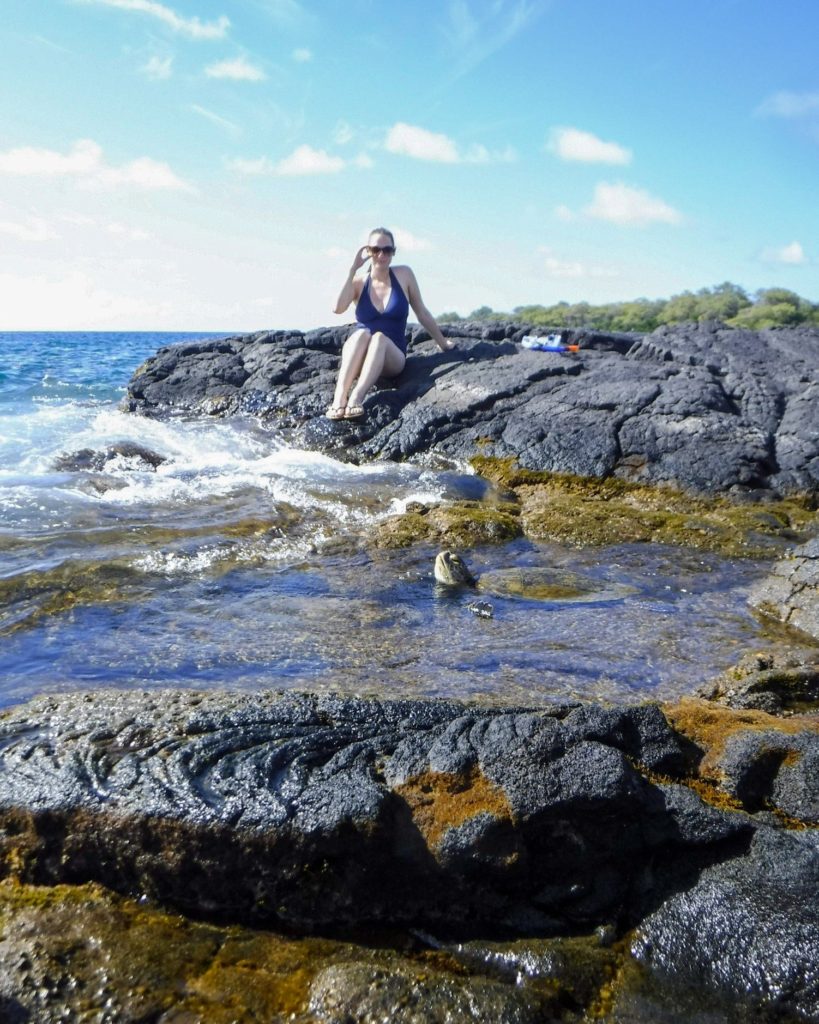
6) Kahalu’u Beach
Speaking of snorkelling, another fantastic spot is Kahalu’u Beach. Situated just south of Kona, this sprawling beach with sheltered waters features toilets, showers, lockers and a food truck where you have to try shaved ice (although we can’t promise you’ll like it)! There’s also often a turtle or two hanging around in the shallows here.
Kahalu’u Beach is also a popular surfing spot and several surf schools operate from here, including Hawai’i Lifeguard Surf Instructors, Kona Town Surf Adventures and Kahalu’u Bay Surf and Sea.
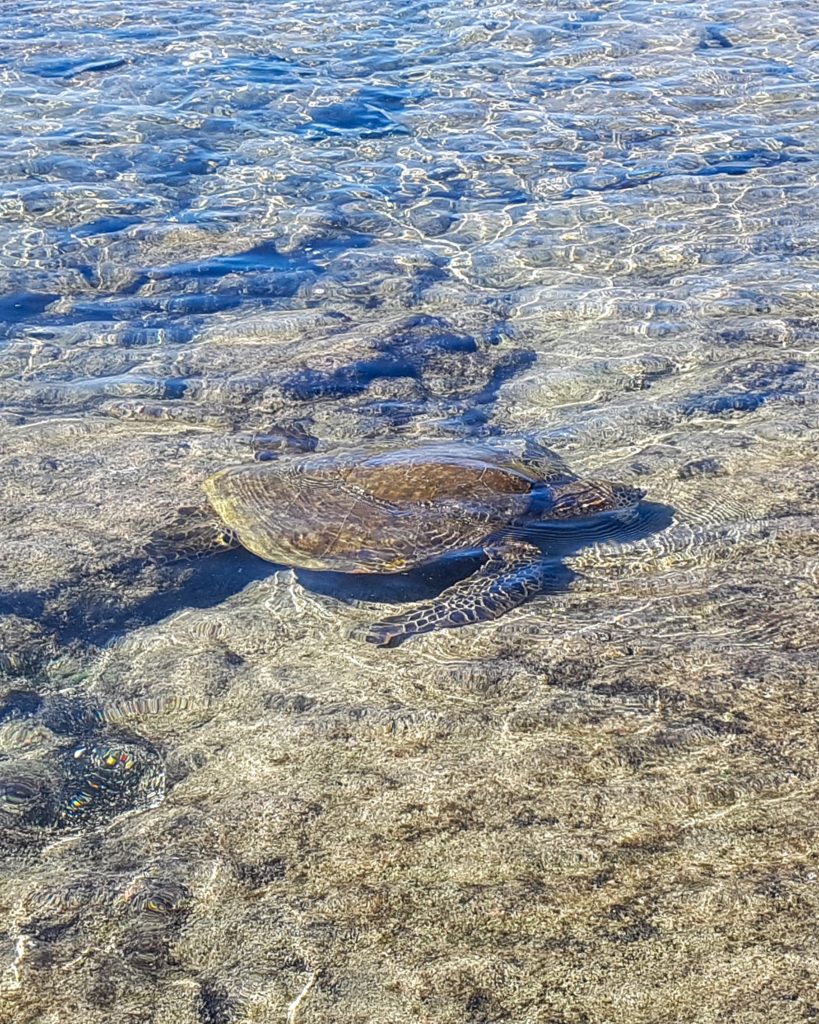
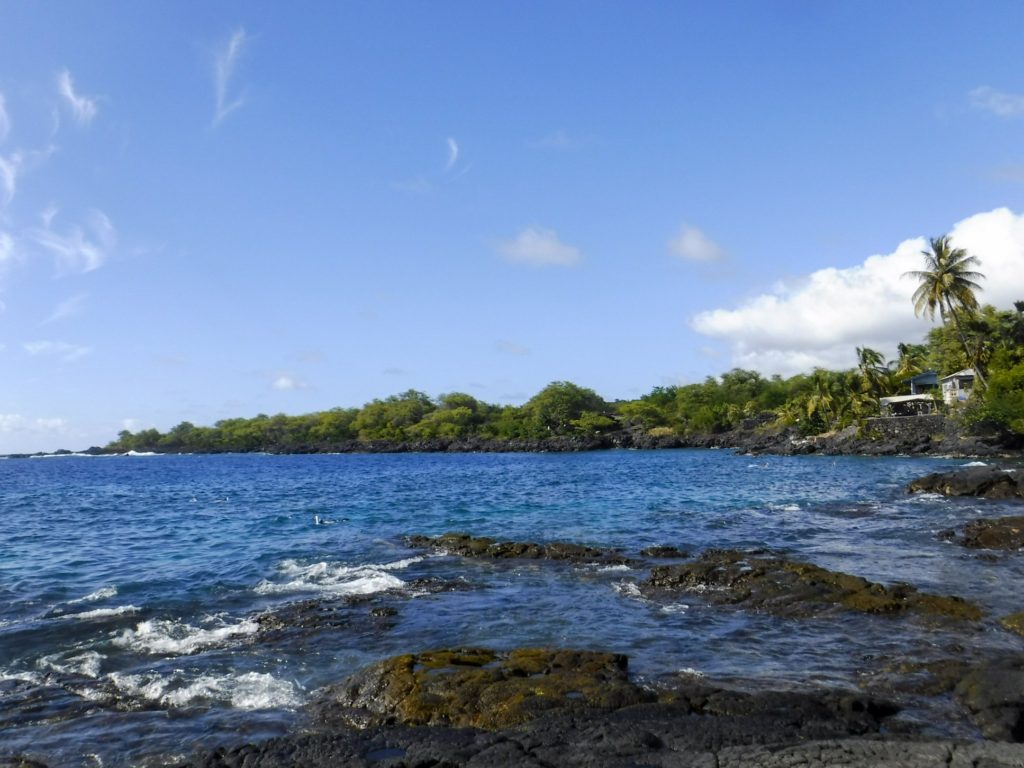
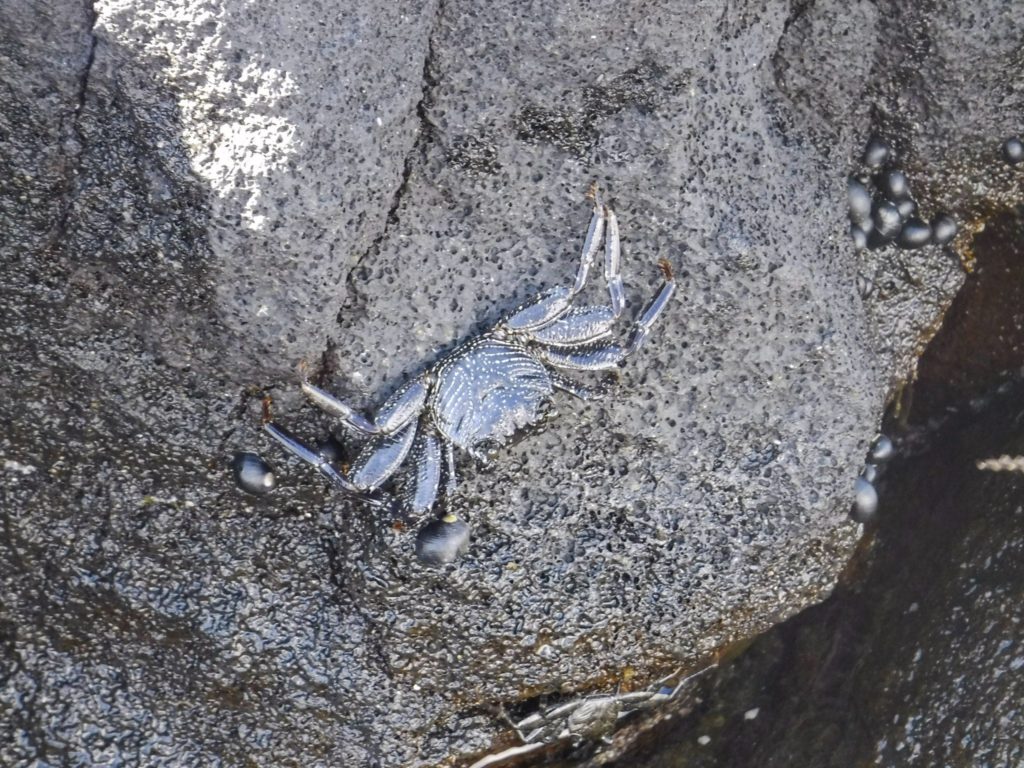
7) Ka’upulehu Beach
This is one of those spots we learned about through word of mouth and you’ll be hard-pressed to find it in many other Hawai’i blogs. That doesn’t make it any less of a must-see spot though. Located at the Four Seasons Resort Hualalai at Historic Ka’upulehu, Ka’upulehu Beach boasts sprawling golden sands and dramatic lava rocks, but it’s the turtles here that piqued our interest. The local who recommended this spot to us called it ‘Nappy Turtle Beach’. This is due to the number of sea turtles that haul out to sleep on the beach. The National Oceanic and Atmospheric Association (NOAA) is so used to receiving calls from tourists worried about the wellbeing of the turtles they’ve had to install a sign to say: don’t worry, these turtles are not injured, they’re just sleeping!
To enter, you need to stop at the guard’s hut and ask for a pass to the beach, which is free. Despite belonging to one of the most notorious hotels on the island, when we visited at 16:00 on a November afternoon we had the beach all to ourselves!
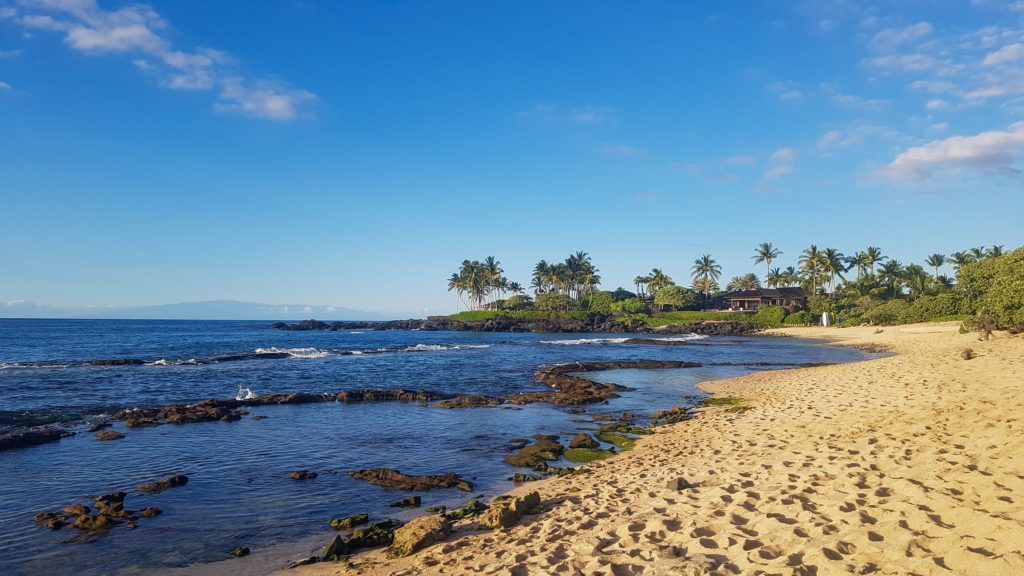
8) Kealakekua Bay
Kealakekua Bay is home to the Captain Cook Monument, an 8 metre (27 ft) tall obelisk which memorialises the spot where intrepid explorer Captain Cook met his end. The monument isn’t easy to reach, requiring either a two and a half hour hike on Captain Cook Monument Trail or a boat.
The bay is one of the best places to snorkel in the whole of Hawai’i, with crystal clear waters and undisturbed reef. It is also a favourite spot for spinner dolphins, due to its protected nature. You can hire a kayak from near Nāpō’opo’o Pier or Manini Beach and paddle out into the bay, where you may be joined by the dolphins if they’re in the area.
You can visit Captain Cook’s Monument on a Sightseeing & Snorkel Expedition, which includes a coastal boat tour with knowledgeable guide, as well as all your snorkel gear and snacks.
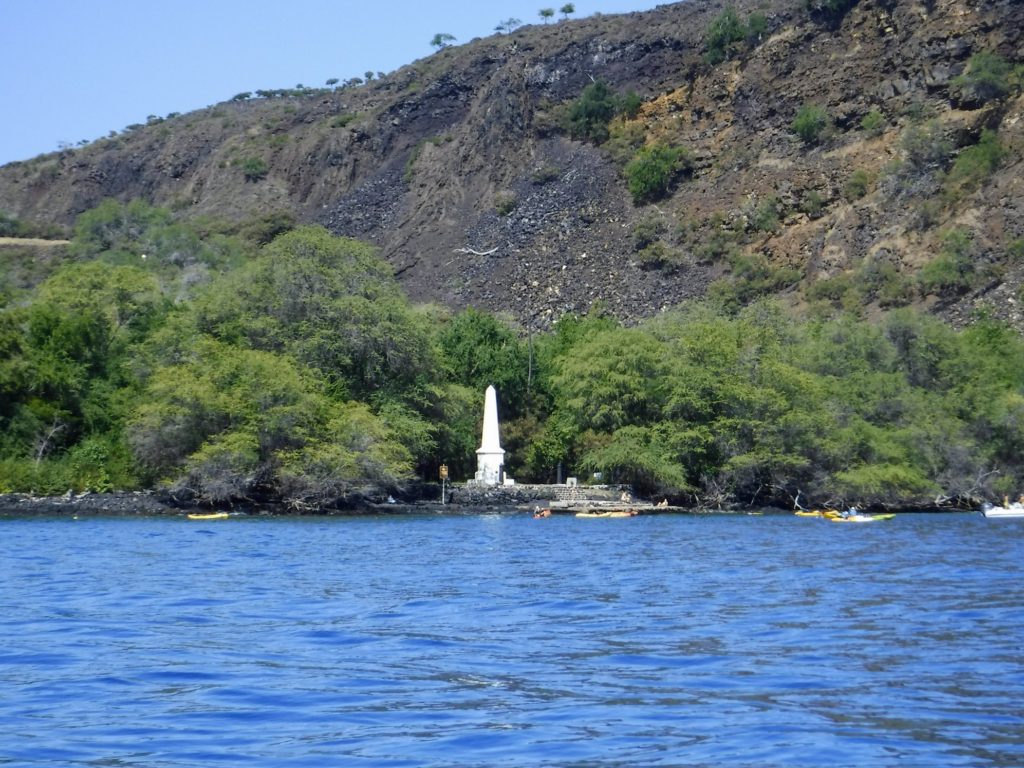
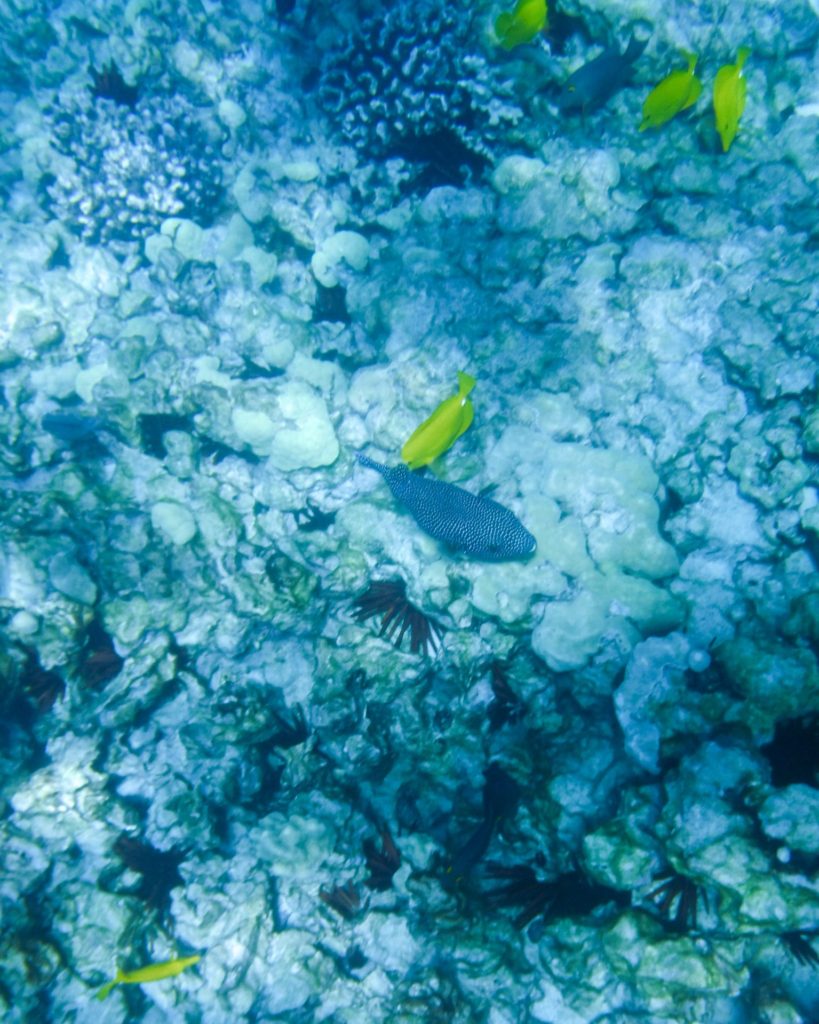
9) Watch spinner dolphins put on a show
The Kohala Coast is one of the best places in all of the Hawaii islands for spotting cetaceans, including whales and dolphins. Four kinds of dolphin can be found in the waters here: pacific bottlenose, rough-toothed, spotted and spinner, of which the latter is the most common.
A pod of spinner dolphins can often be found entering Ōneo Bay in Kona most mornings. We stayed in the Royal Kona Resort and they came by at 7:00 like clockwork, putting on a show of flips, spins and slaps. You can see more in the (albeit amateur) footage we captured during our trip below.
They can also be found in Kealakaka Bay, which is a popular resting spot for them. If you’re snorkelling or kayaking here, being joined by a pod dolphins can be a dream come true. But be sure to keep your distance and don’t disturb or actively seek them out in the water. Spinner dolphins need to rest during the day to ensure they have the energy for feeding and if they’re disturbed during their rest it could be fateful for them. You can read more about the laws surrounding Hawaii’s dolphins and how to see them respectfully in our article: Ethical Wildlife Tourism in Hawaii.
There are some companies who offer swim with dolphin and dolphin watching tours in Hawaii. Please remember it is illegal to swim with them for their protection. Instead, one of the best ways to guarantee a responsible sighting of Hawaii’s dolphins is on a boat tour. All of Sea Quest’s sightseeing and snorkel tours give you an excellent chance of seeing dolphins with an eco-certified company, without harming them.
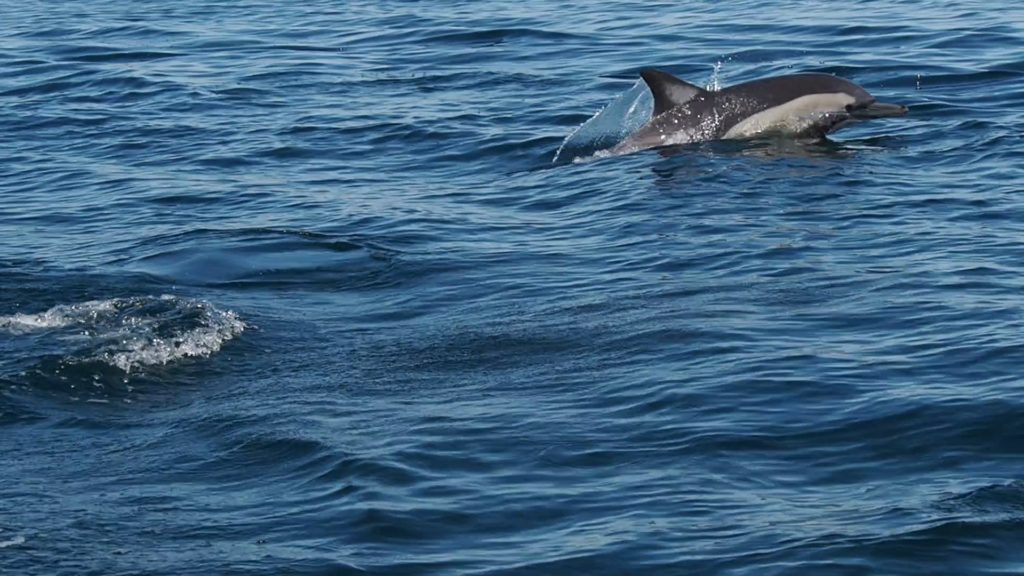
10) Snorkel
Snorkelling is one of the best things to do in Hawaii. Kailua-Kona has some of the best waters for snorkelling, with crystal clear visibility and plenty of marine flora and fauna. You can buy or rent a snorkel set and snorkel in Kona for free. You can find all the best spots to snorkel on Big Island here.
Alternatively, you can book onto a snorkel tour. We’d recommend booking through Sea Quest, an eco-certified company who run responsible cetacean and snorkelling tours. They have several popular snorkelling tours to different destinations around Big Island, including Pu’uhonua O Honaunau & Kealakekua Bay, South Kona and Captain Cook’ Monument. Each tour includes all your gear, snacks or lunch and sightseeing along Kona’s coastline, as well as the possibility of whale and dolphin watching. Their boats are smaller than competitors too, so groups are kept small for a more personalised experience.
Read next: The Thorough Guide to Snorkelling on Hawaii’s Big Island
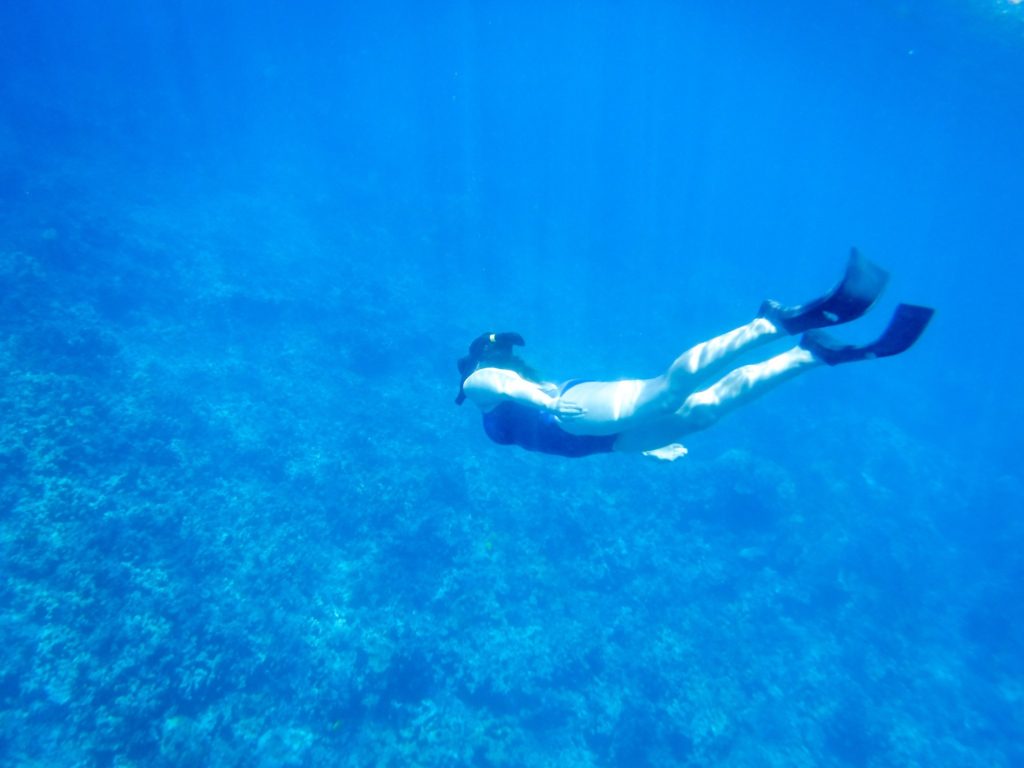
11) Visit Hawaii Volcanoes National Park
Located in the south east of Big Island, Hawaii Volcanoes National Park is a huge volcanic national park.
Stretching from the summit of active volcanos Mauna Loa and Kīlauea, to the ocean, the park is home to some of the world’s most active volcanoes, as well as steaming vents, giant craters, fields of petrified lava and (if you visit during an eruption) flowing lava. You can explore the park on a Virtual Self-drive Tour, which navigates the Crater Rim Drive and Chain of Craters Road. There are plenty of hikes in the park, with highlights including craters, petroglyphs, steam vents and lava fields.
If you don’t have a car, or wish to learn more about the park, it’s best to book onto a tour. Spend the day exploring and stay past dark to see the evening eruption glow (if Twilight option is selected) on an Intimate Volcano Discovery Tour. Or Combine the park with other Big Island highlights on a Volcanoes & Winery Day Tour.
You could even opt for a once-in-a-lifetime experience and fly over Hawaii Volcanoes National Park on a Scenic Helicopter Flight from Hilo. While budding astrologists should consider joining Twilight Volcano and Stargazing Tour.
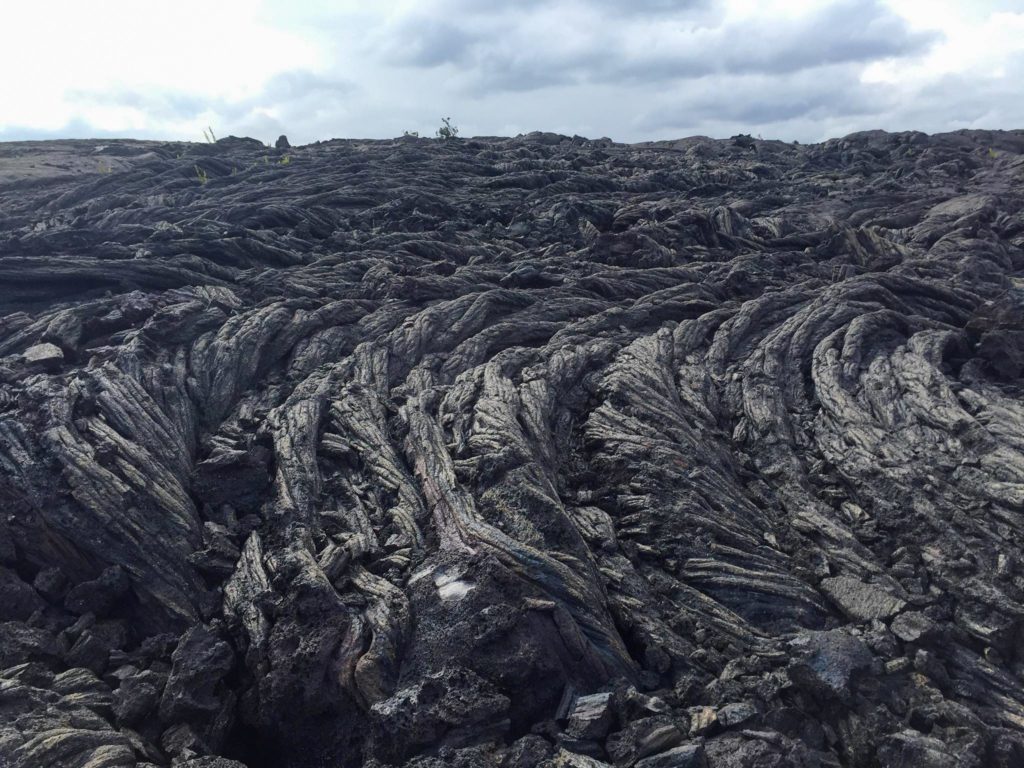
12) Stargaze on a volcano
Taking a night-time guided stargazing tour is one of the most unique things to do in Hawaii. A dormant volcano, Mauna Kea stands at nearly double the elevation of Machu Picchu, with its peak being 4,207.3 metres (13803ft) above sea level. It is one of the best places in the world to stargaze due to lack of light pollution.
Mauna Kea’s summit is home to a telescope observing centre, where Dan was actually sent to observe the stars on a work trip. The James Clerk Maxwell Telescope (JCMT), the largest single-dish telescope that operates in submillimetre wavelengths. Tourists can explore the Visitor Centre, witness sunset and stargaze on a Mauna Kea Summit Sunset and Stars Tour With Free Astro Photos. A professional guide will point out constellations and take photos of you in front of a backdrop of thousands of twinkling stars.
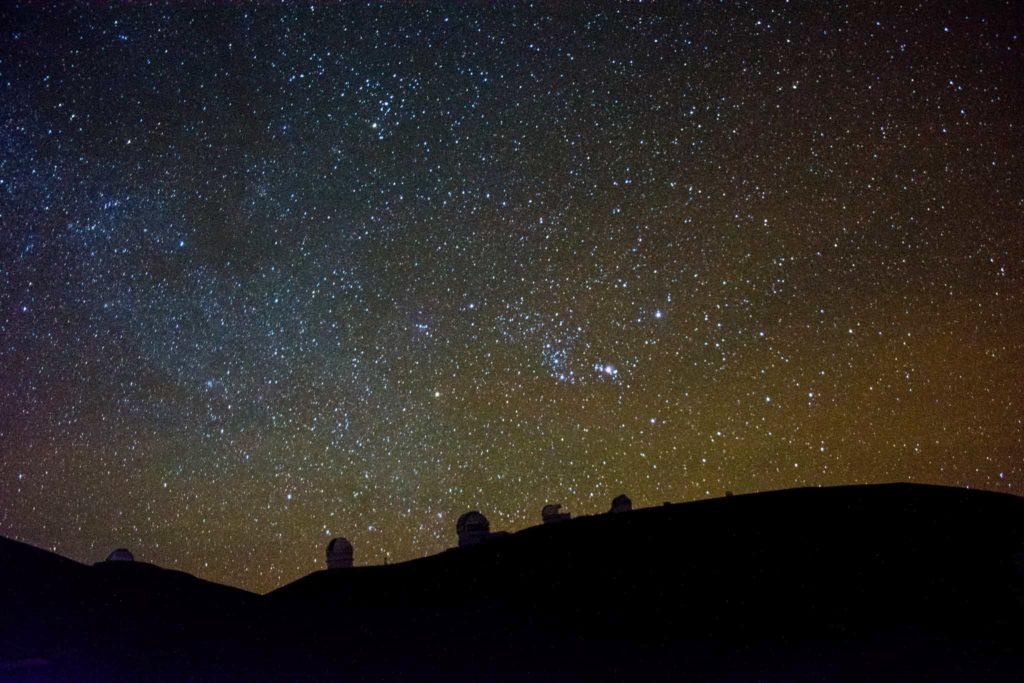
13) Go Whale Watching
Whale watching is a thrilling activity and shouldn’t be missed on a trip to Hawaii. Every year, humpback whales migrate all the way from Alaska between the months of November to April. Witnessing Hawaii’s gentle giants on a Whale Watching Cruise from Kona is a bucket list experience and on of the best things to do on Big Island.
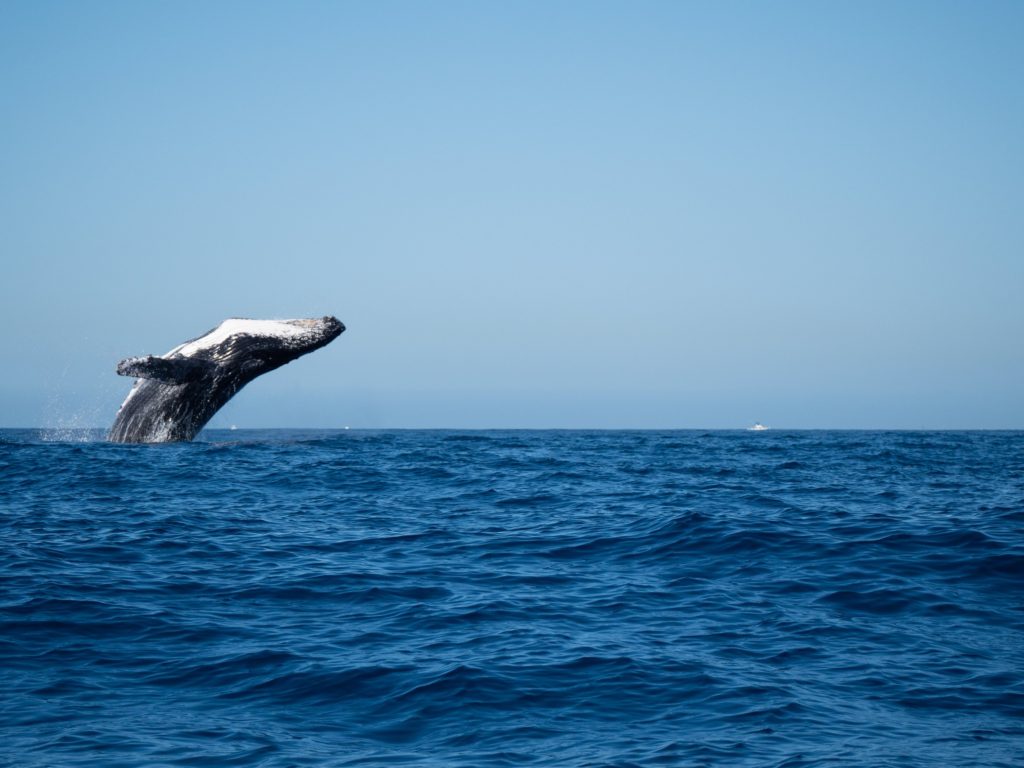
14) Swim with manta rays
Snorkelling with manta rays is one of the most popular activities with visitors to Hawaii. There are several companies who run the trip, but we’d encourage you to book with a responsible company on the Manta Ray Green List. These companies have been certified as safe and sustainable by the Hawaii Ocean Watch.
If you want to book a manta ray tour, we’d recommend Sea Paradise. As an eco-friendly, certified suitable tour company, they recognise the importance of protecting Hawaii’s ocean environment. You can book a Snorkel with Manta Rays Tour with them, knowing they will do their best to protect the species from harm. It includes all your gear, a professional guide and snacks and hot cocoa to warm you up afterwards.
We have some concerns about the long term impacts attracting manta rays to plankton with light has on the species. You can read more about Ethical Wildlife Tourism in Hawaii here. With any wildlife activity, we’d encourage you to choose an eco-certified company with good morals and always consider your impact on the animal.
Read next: Let’s Talk About Ethical Wildlife Tourism
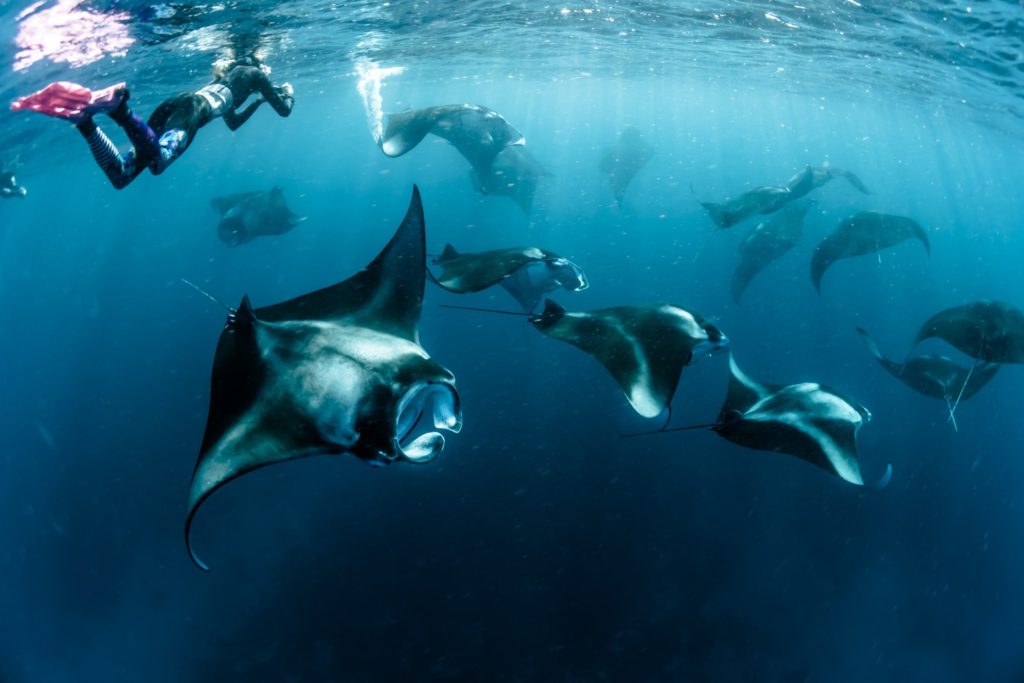
15) Go in an underwater submarine
You don’t have to be a swimmer to explore Hawaii’s wonderous underwater world. From Kona, you can book an Underwater Submarine Adventure. Featuring a submarine once featured in National Geographic, descend more than 30 metres (100ft) and see colourful coral reefs and marine wildlife up close.
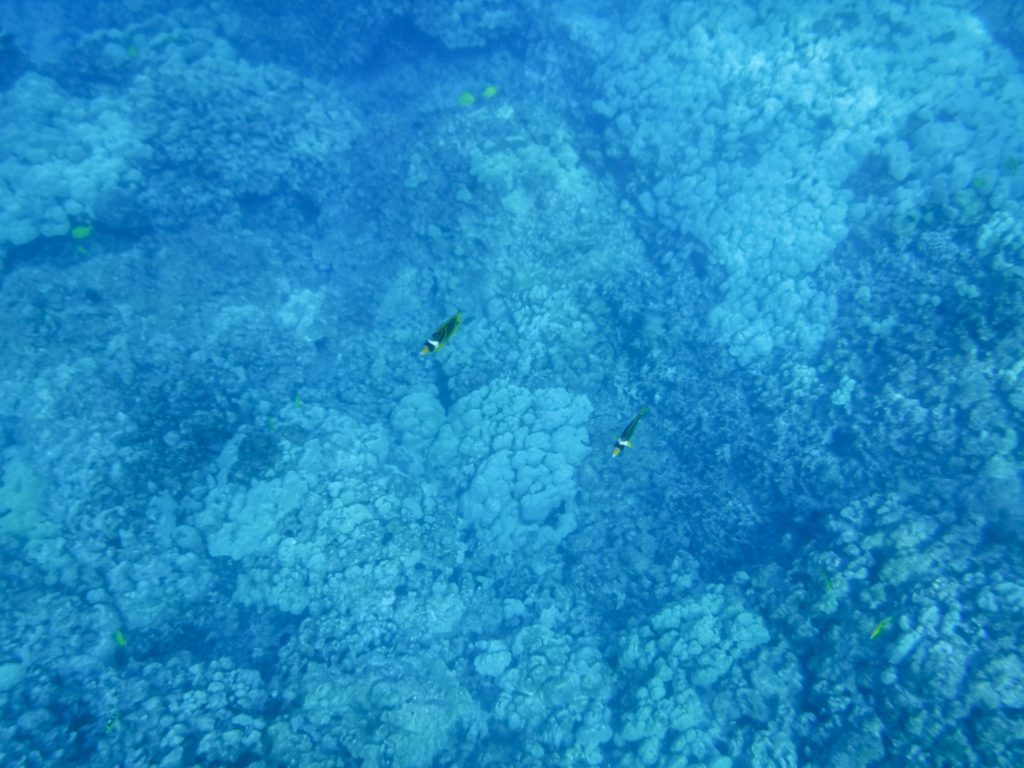
16) Hike to Petroglyphs
Petroglyphs, known by Hawaiians as kii pohaku, are a form of rock art found throughout Hawai’i, that predates European contact with the islands. There are 2 places near Kona where you can see petroglyphs: Waikoloa Petroglyphs and the Puakō Petroglyph Preserve. Each site boasts thousands of petroglyphs and features trails you can follow and spot the petroglyphs along the way. Designs include turtles, paddlers, sails, marchers, dancers, dogs, chickens and deity symbols.
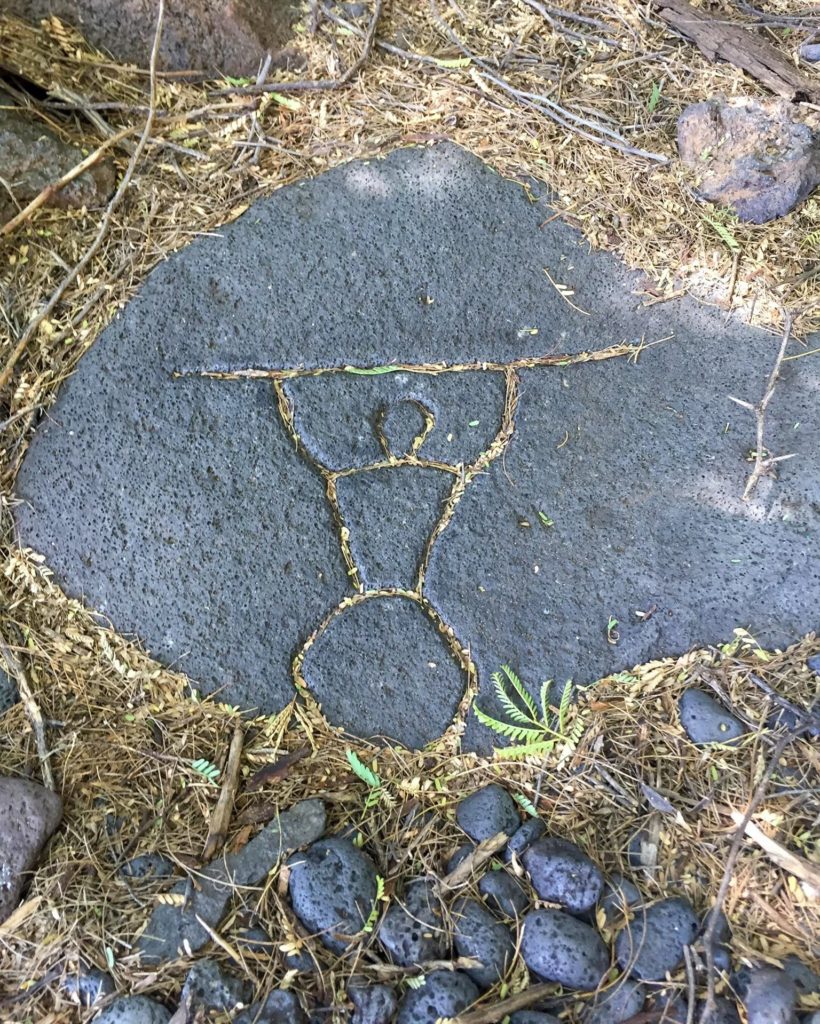
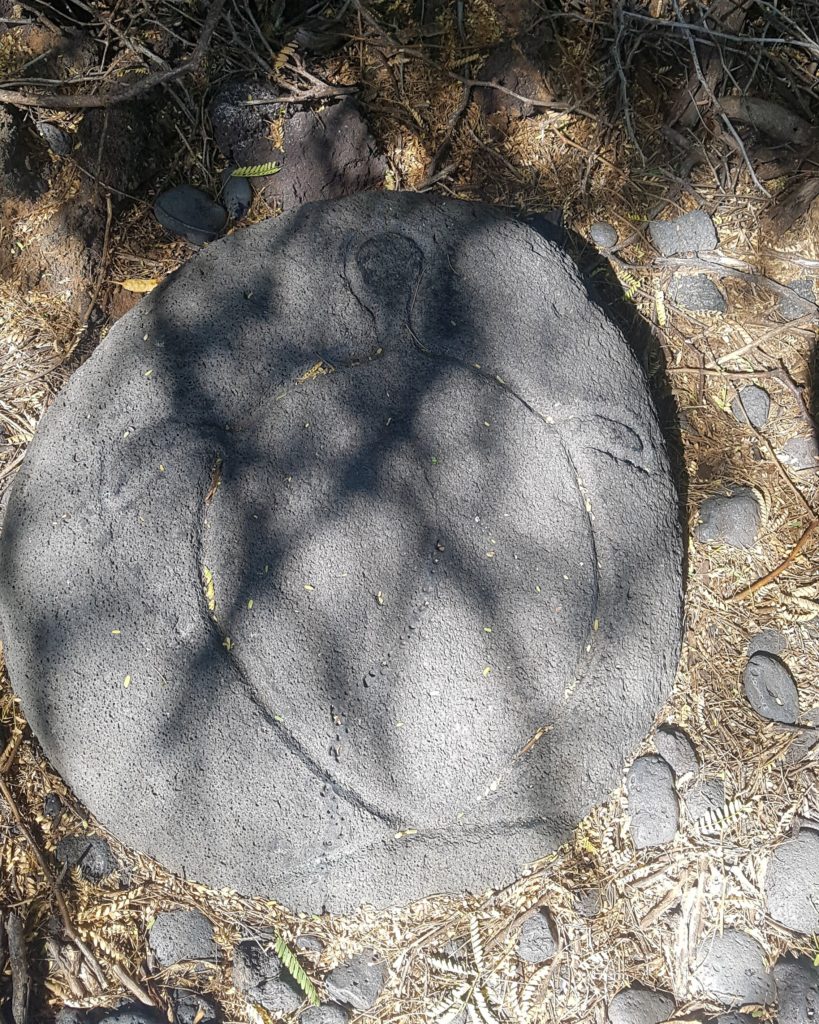
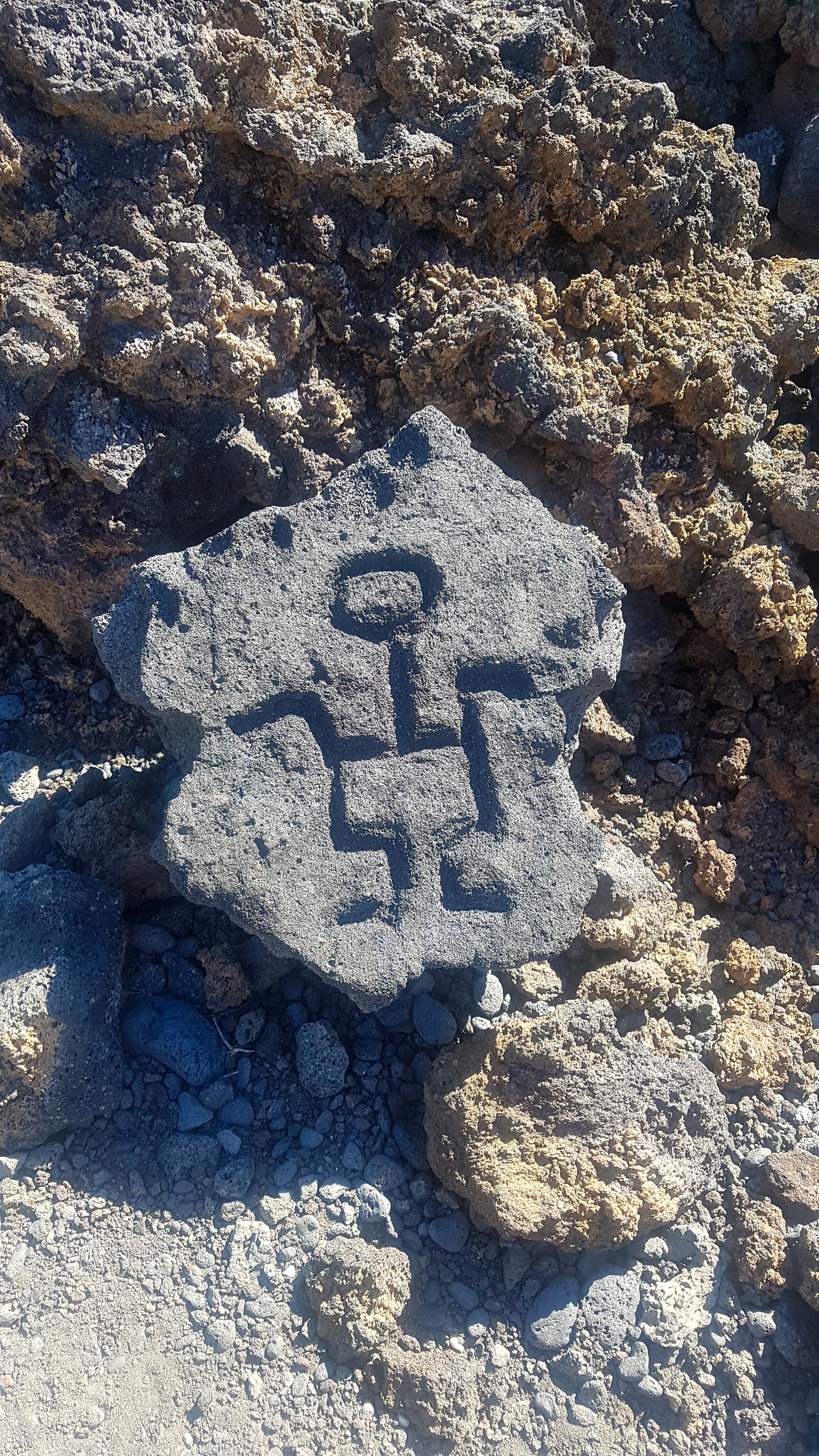
17) Waimea Canyon
Known as the Grand Canyon of the Pacific, Waimea Canyon is a large gorge in Waimea Canyon State Park. It is approximately ten miles long and up to 914 metres (3,000 ft) deep and is home to Kahua Ranch, a working sheep and cattle ranch where you can discover Hawaiian cowboy culture. Waimea is Hawaiian for ‘reddish water’, a reference to the erosion of the canyon’s red soil. Visitors can enjoy a scenic drive, canyon lookouts, a viewpoint of Ni‘ihau Island and plenty of trails. While you’re in the area, pop into Waimea Coffee Company, a lovely café with a great array of soups, salads and sandwiches and serving genuine Kona coffee.
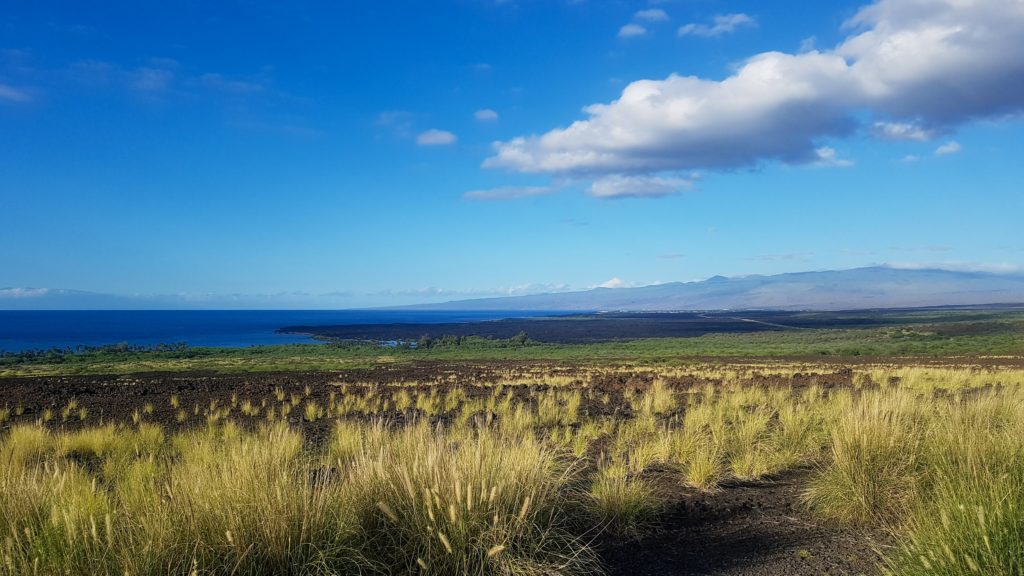
18) Visit a Coffee Farm
And speaking of coffee, you can’t visit Kailua-Kona and not try Kona coffee! Cultivated on the slopes of Hualalai and Mauna Loa, genuine Kona Coffee is globally renowned for its full bodied flavour and pleasing aroma. There’s a large selection of coffee farms offering tours and tastings, but we’d recommend Greenwell Farms. Established in 1850, Greenwell features a historic store and offers free tours with no reservations required. You’ll learn a lot about the coffee making process, as well as the fruit trees they also grow, including avocados, mangoes, papaya and guava. And finish with a tasting of the different coffee blends they stock, before an opportunity to purchase some to take away. Many Full Day Big Island Tours include a stop at a Kona coffee farm for you to sample and purchase the perfect, tasty souvenir.
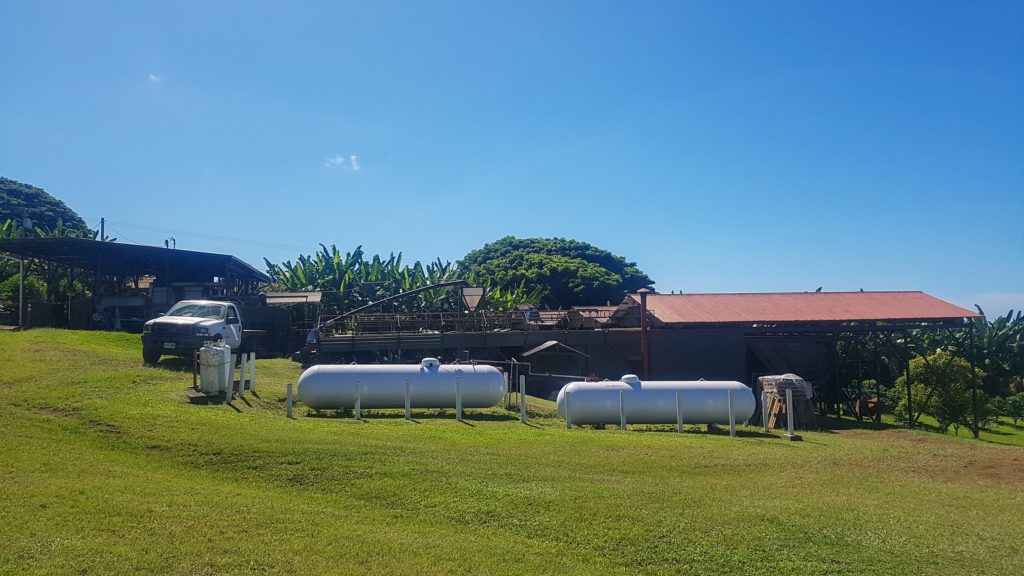
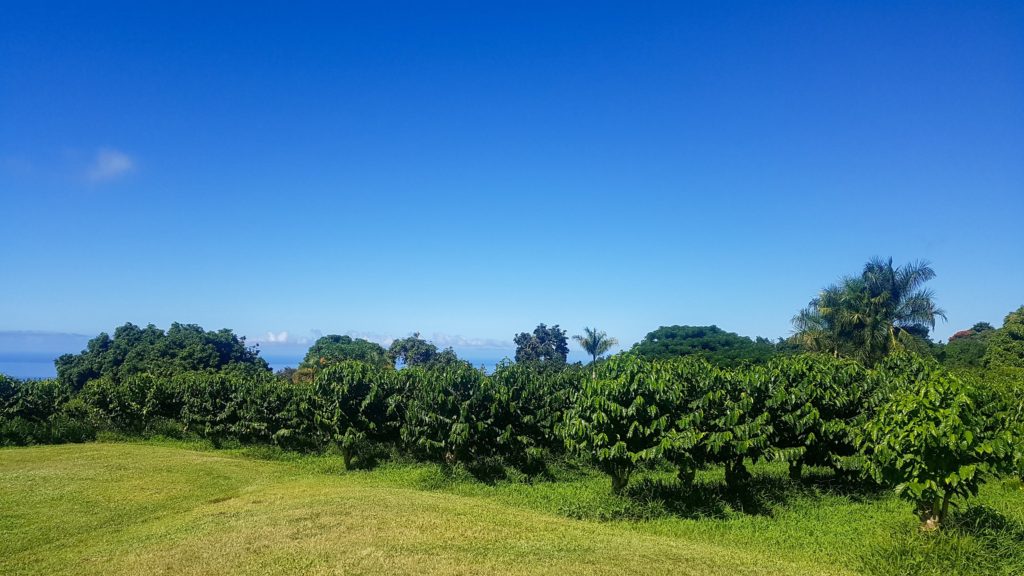
19) Kona Cloud Forest Sanctuary
Lying just 15 minutes from Kona International Airport, Kona Cloud Forest Sanctuary is home to an array of plant life, including ferns, palms, flowers, hundreds of exotic and native species, over 100 varieties of bamboo, as well as gigantic tree ferns, some of which are 30 feet or more in height. The sanctuary offers educational programs and botanical tours through KapohoKine Tours. The forest is also popular with bird lovers, who can expect to see many endemic and exotic birds, including the Hawaiian Hawk and Honey Creepers.
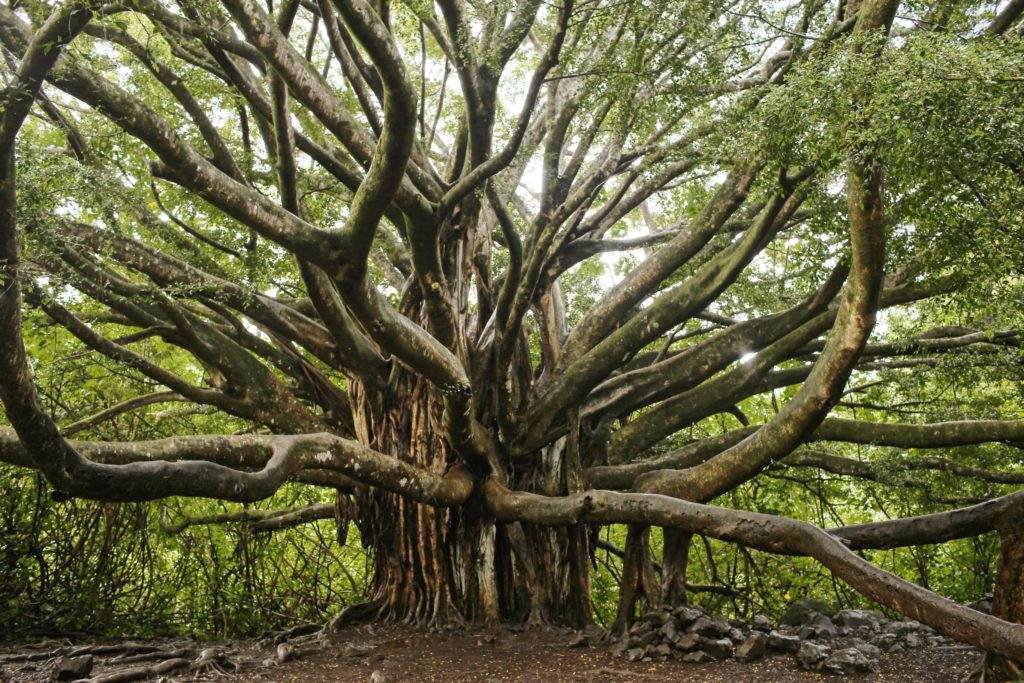
20) Explore Hilo
Hilo is a small town on Hawaii’s tropical east coast. Known for lush rainforests, countless waterfalls and black sand beaches, Hilo is worth visiting from Kona, if not worth staying in altogether. Visit the iconic Rainbow Falls, drive along Old Mamalahoa Highway, explore Hawai‘i Tropical Bioreserve & Garden, walk the Onomea Bay Trail and step onto the Avatar planet Pandora at Akaka Falls State Park. There’s lots to see and a day trip to Hilo is quite the contrast to the hubub and dry heat of Kailua-Kona. You can explore Hilo on a Hawaii Volcanoes National Park and Hilo Highlights Small Group Tour or as part of a Full Day Circle Island Tour From Kona.
Read next: The Thorough Guide to Hilo
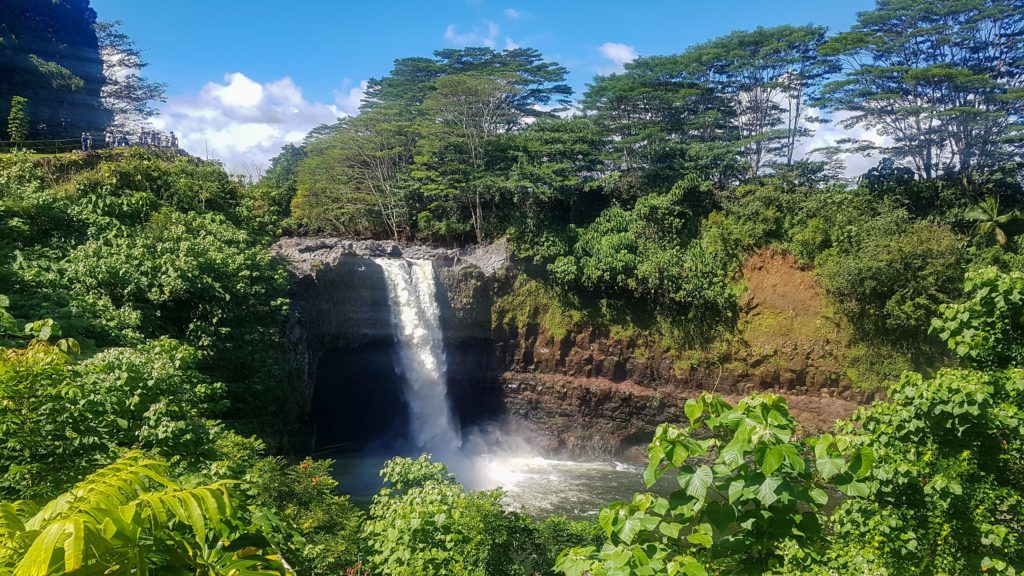
21) Attend a Luau
A lū’au is a traditional Hawaiian party that usually encompasses a feast and entertainment. Experience this ancient Polynesian custom in an enchanting oceanfront setting at a Luau. Some Luaus are more touristy than traditional, but all usually include an island-inspired buffet, Luau show and Samoan fire-knife dancing.

22) See Kona from above
Those looking for a unique holiday experience should consider taking a Scenic Helicopter Flight over Kona. Soar over vast coastlines and see some of Big Island’s most iconic attractions, including Kona Town, Kua Bay and the Captain Cook monument. You may even see migrating humpback whales if you’re lucky! With up to 30 minutes in the air, this aerial tour is on the longer side as helicopter rides go and very good value for money.
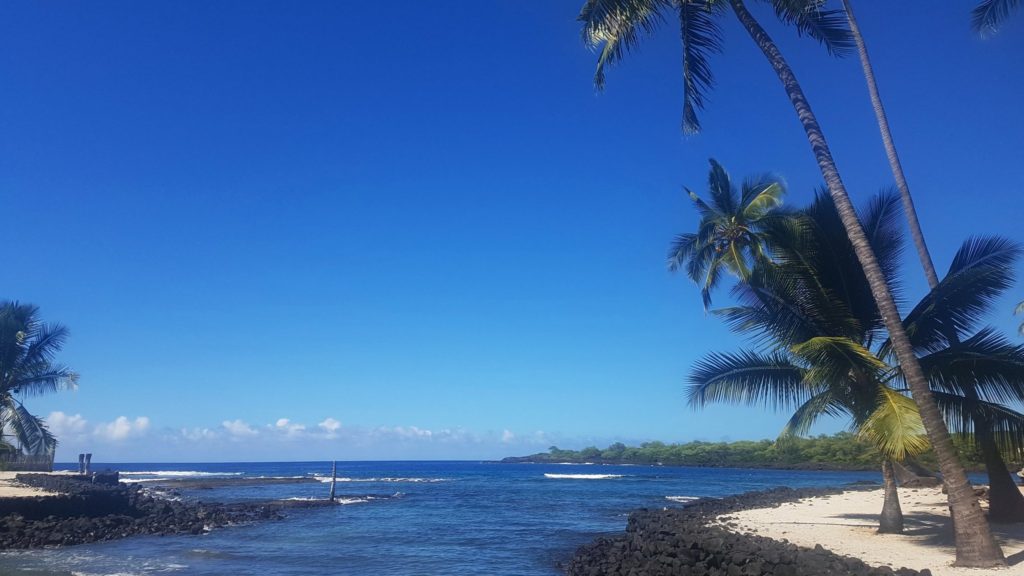
Interactive Hawaii Big Island Map
What to eat in Hawaii
Papa Kona Restaurant & Bar – An ocean front restaurant with stunning views of Ōneo Bay, delicious cocktails and incredible avocado fries!
Huggo’s & Huggo’s on the Rocks – A waterfront restaurant, split into two – one side casual, one side upmarket – offering seafood, steaks & pasta, plus tiki cocktails and live entertainment. Try the seafood chowder and fish tacos or enjoy a hearty American-style breakfast.
Basik Cafe – A little café with outdoor seating, specialising in açaí bowls and smoothies.
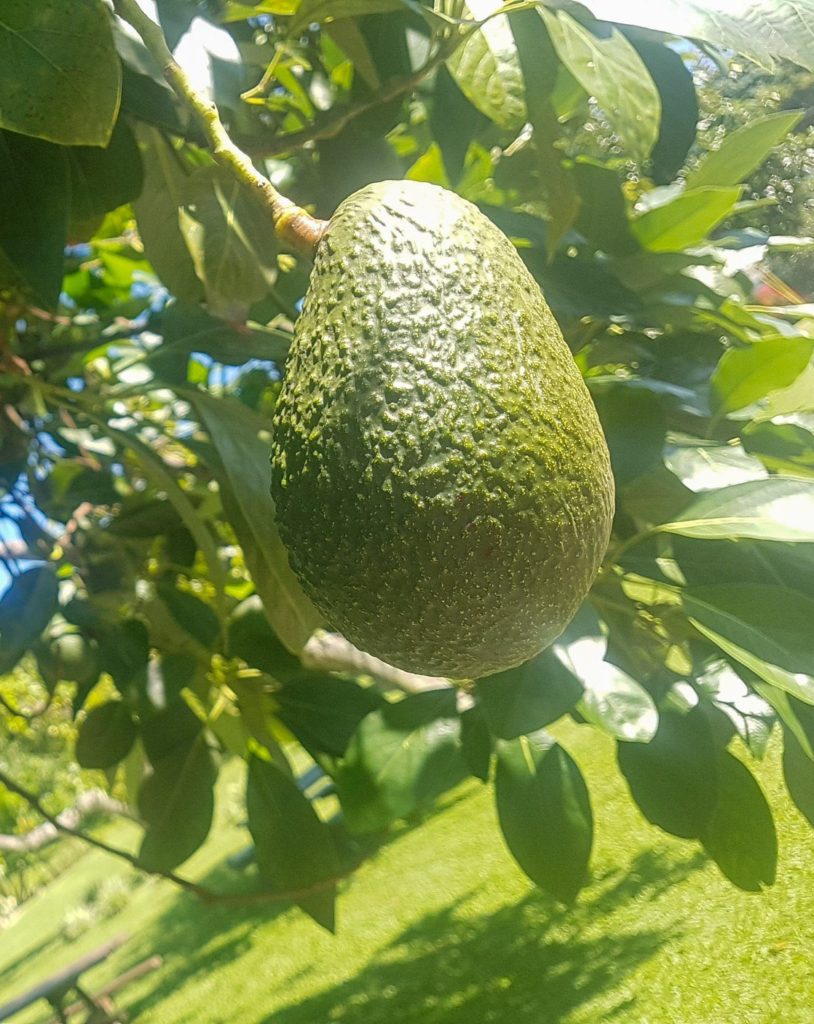
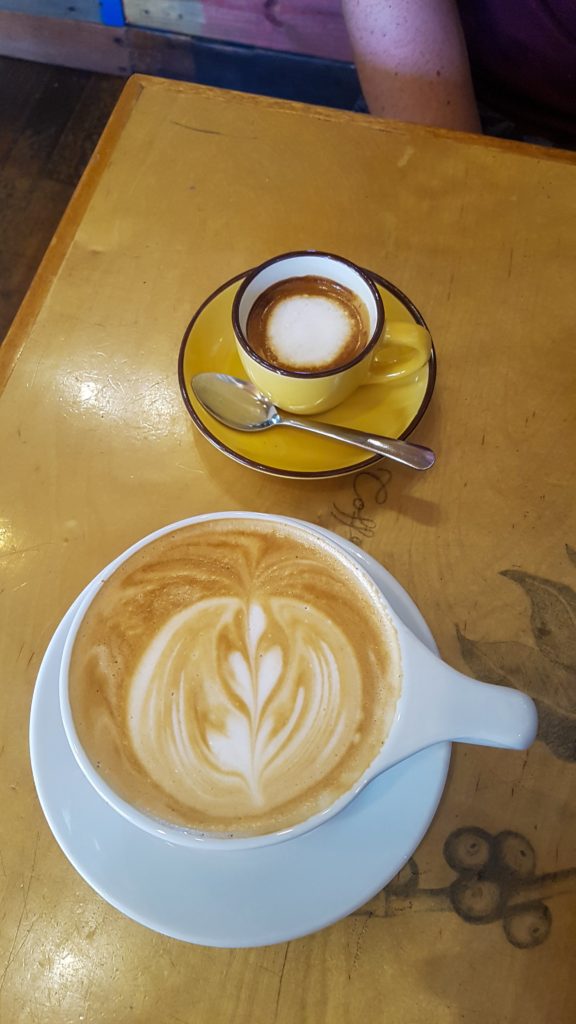
Where to Stay in Kailua-Kona
Kailua-Kona is an upmarket holiday destination so accommodation here is more expensive than you might find in other parts of the island. As such, the prices for budget and mid-range are slightly higher than you would expect in other destinations.
In Kailua-Kona:
Hostel: Kona Beach Hostel
Budget: Kona Tiki or Big Island Retreat
Mid-range: Royal Kona Resort
Luxury: Courtyard King Kamehameha’s Kona Beach Hotel
On the West Coast:
Hostel: Pineapple Park Kona Hostel
Luxury: Mauna Kea Beach Hotel, Autograph Collection
Opulent: Four Seasons Resort Hualalai
You can bring your accommodation costs down by skipping the hotel and choosing a self-catering rental instead.
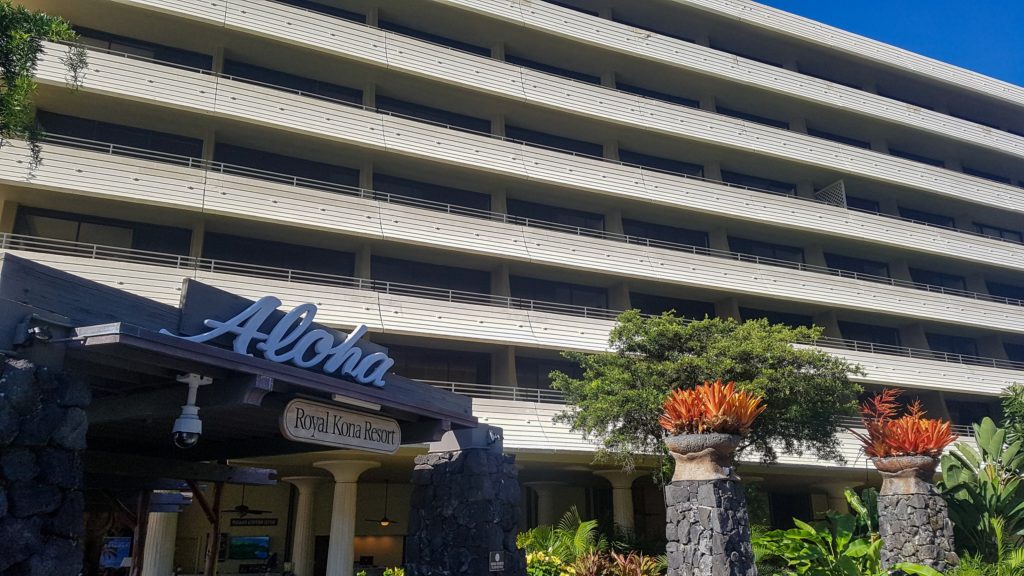
Getting around Hawaii’s Big Island from Kona
Hiring a car is really the best way to get around Hawai’i. Kona International Airport has a wide range of car rental companies, including Hertz, Alamo, Thrifty, Budget and Enterprise. The website Discount Hawaii Car Rental is also really great for comparing rental prices, but we’d recommend booking direct once you find a price so you have correspondence directly with the office you’re hiring from.
If you do need to use the bus, the network is run by Hele-On bus, which has a fee of $2 per journey with extra charges for large bags and bikes.
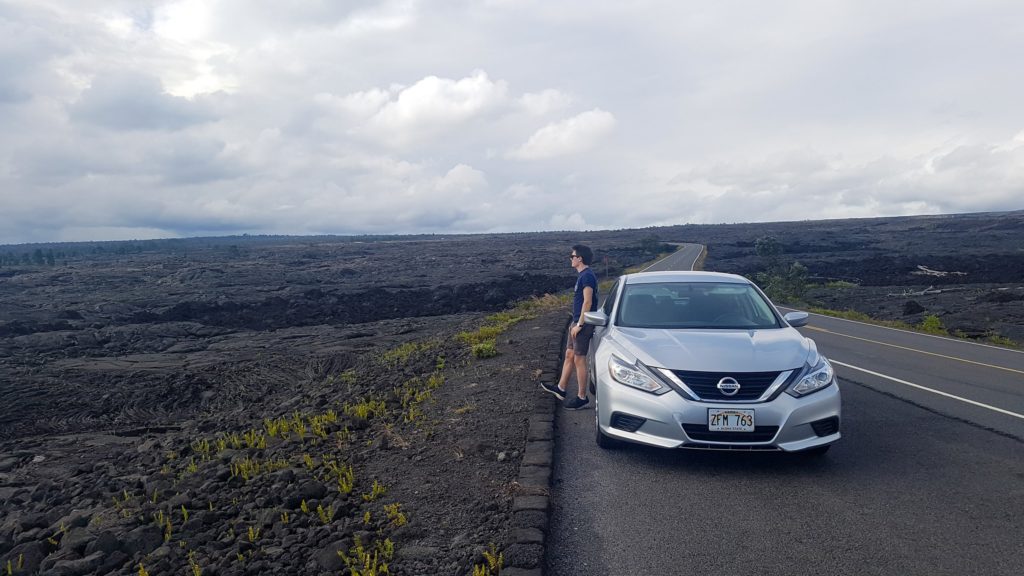
Read next:
The Thorough Guide to Hilo, Hawaii
Everything you need to know about visiting Hawai’i Volcanoes National Park, Hawaii
Everything you need to know about visiting Punalu’u Black Sand Beach, Hawaii
Everything you need to know about visiting Pu’uhonua O Hōnaunau National Historical Park, Hawaii
The Thorough Guide to Snorkelling on Hawaii’s Big Island
